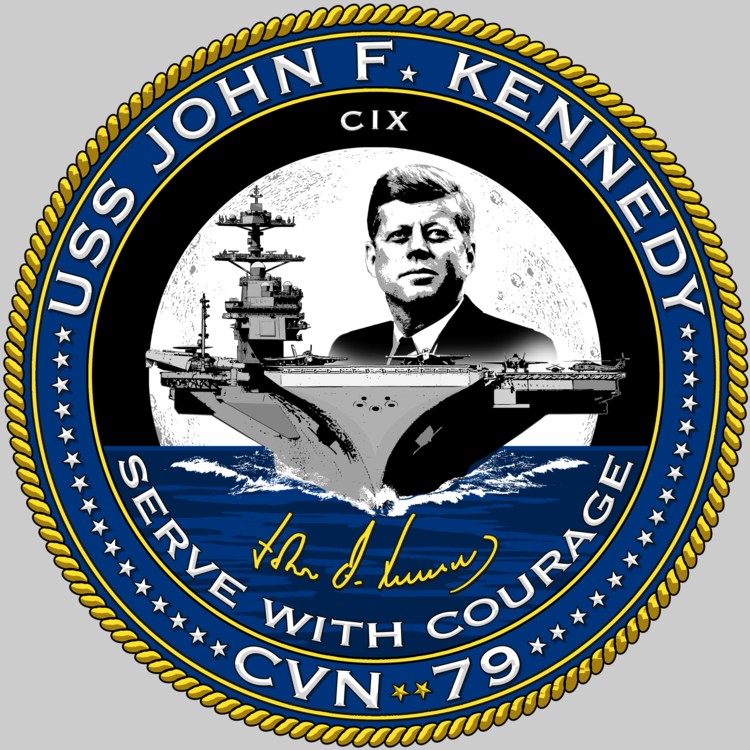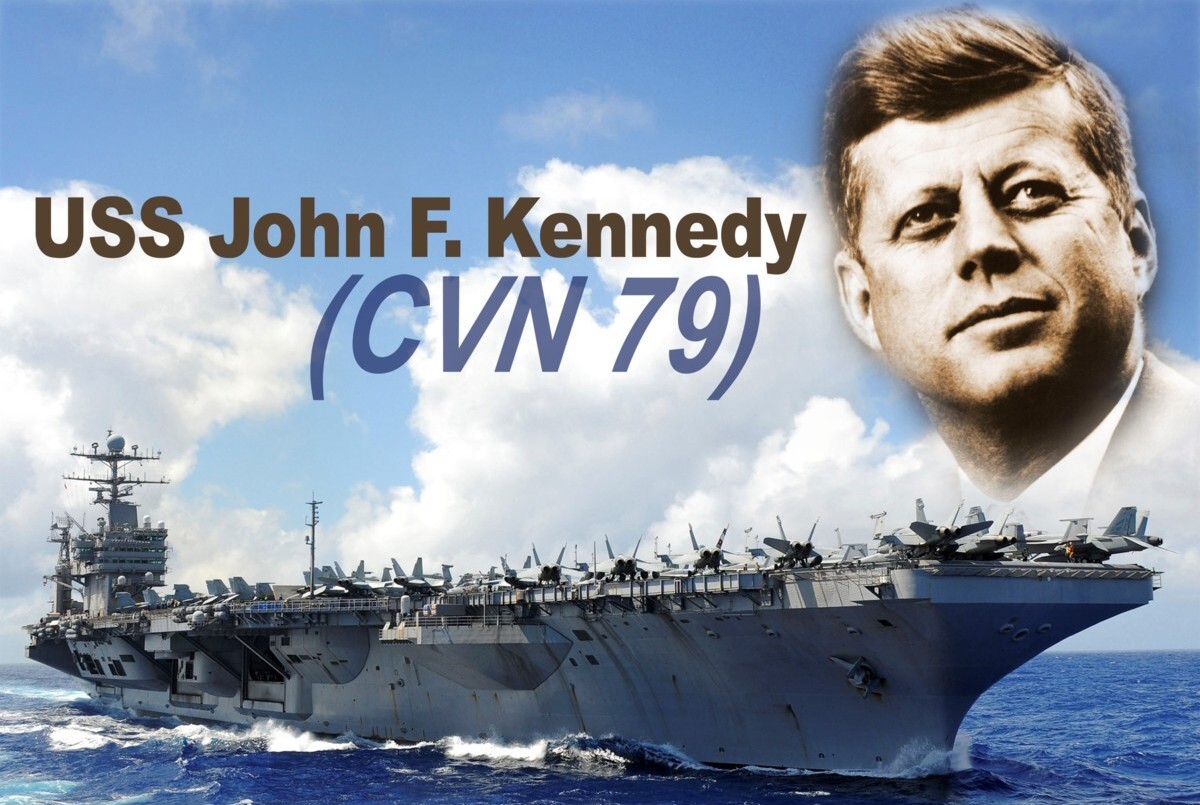 |
||
|
HOME
|
US Navy -
ships
|
US Navy - air
units
|
USMC - air
units
|
International
Navies
|
Weapon Systems
|
Special Reports |
||
|
US Navy - Aircraft Carrier CVN 79 - USS John F. Kennedy |
||
|
||
| 12/24 | ||
|
Type, class:
Aircraft Carrier, nuclear propulsion - CVN; Gerald R. Ford class Builder: Huntington Ingalls Industries, Newport News Shipbuilding, Newport News, Virginia, USA STATUS: Awarded: June 5, 2015 Laid down: July 20, 2015 Launched: October 29, 2019 Christened: December 7, 2019 Commissioned: 2025 ? outfitting + trials Homeport: - Namesake: John F. Kennedy (1917-1963), 35th President of the USA Ships Motto: SERVE WITH COURAGE Technical Data: see: INFO > Gerald R. Ford class Aircraft Carrier - CVN |
||
|
Deployments / Carrier Air Wings embarked: |
||
| images | ||
|
Pre-commissioning Unit / PCU John F. Kennedy (CVN 79) 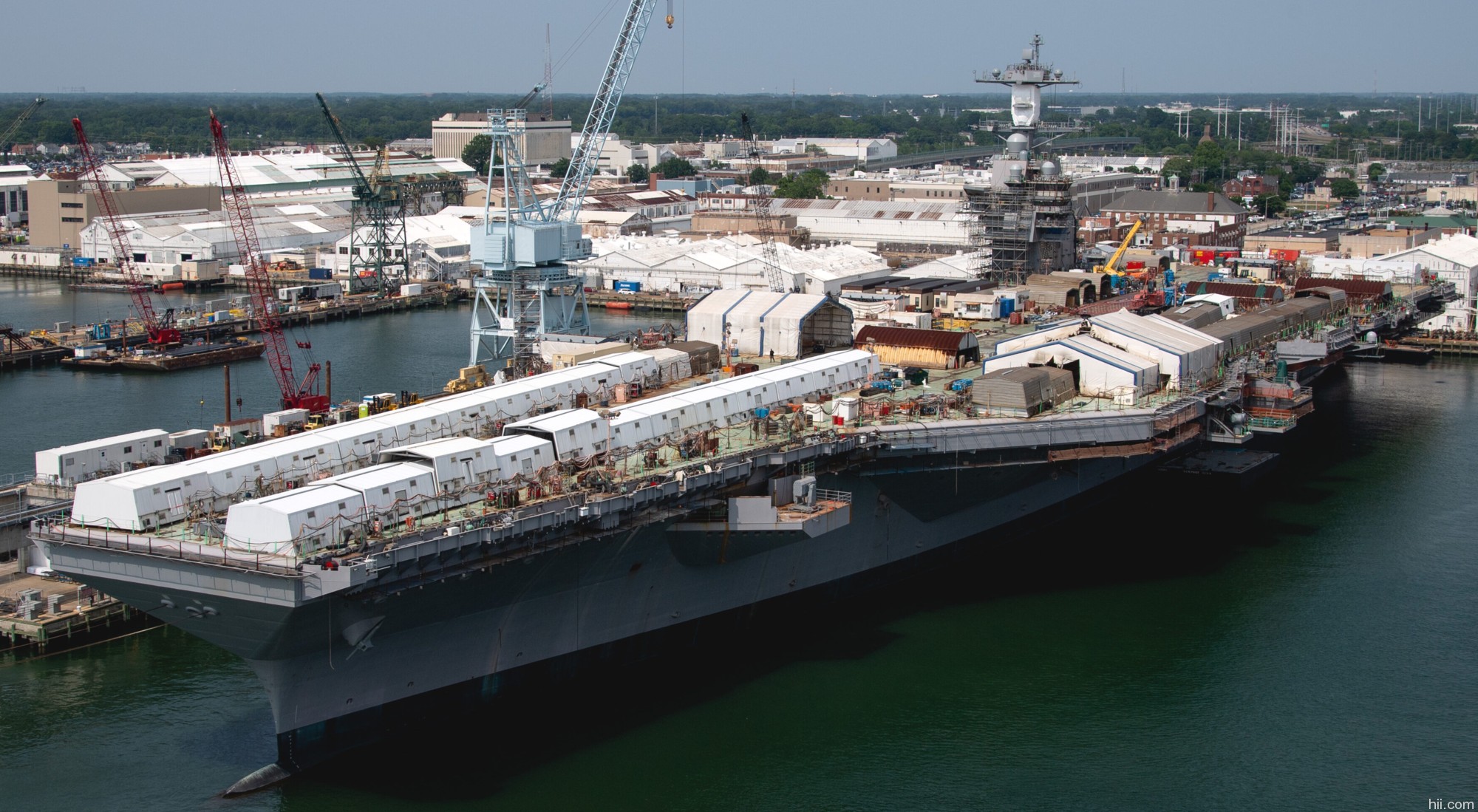 outfitting at HII Newport News Shipbuilding, Virginia - June 2023 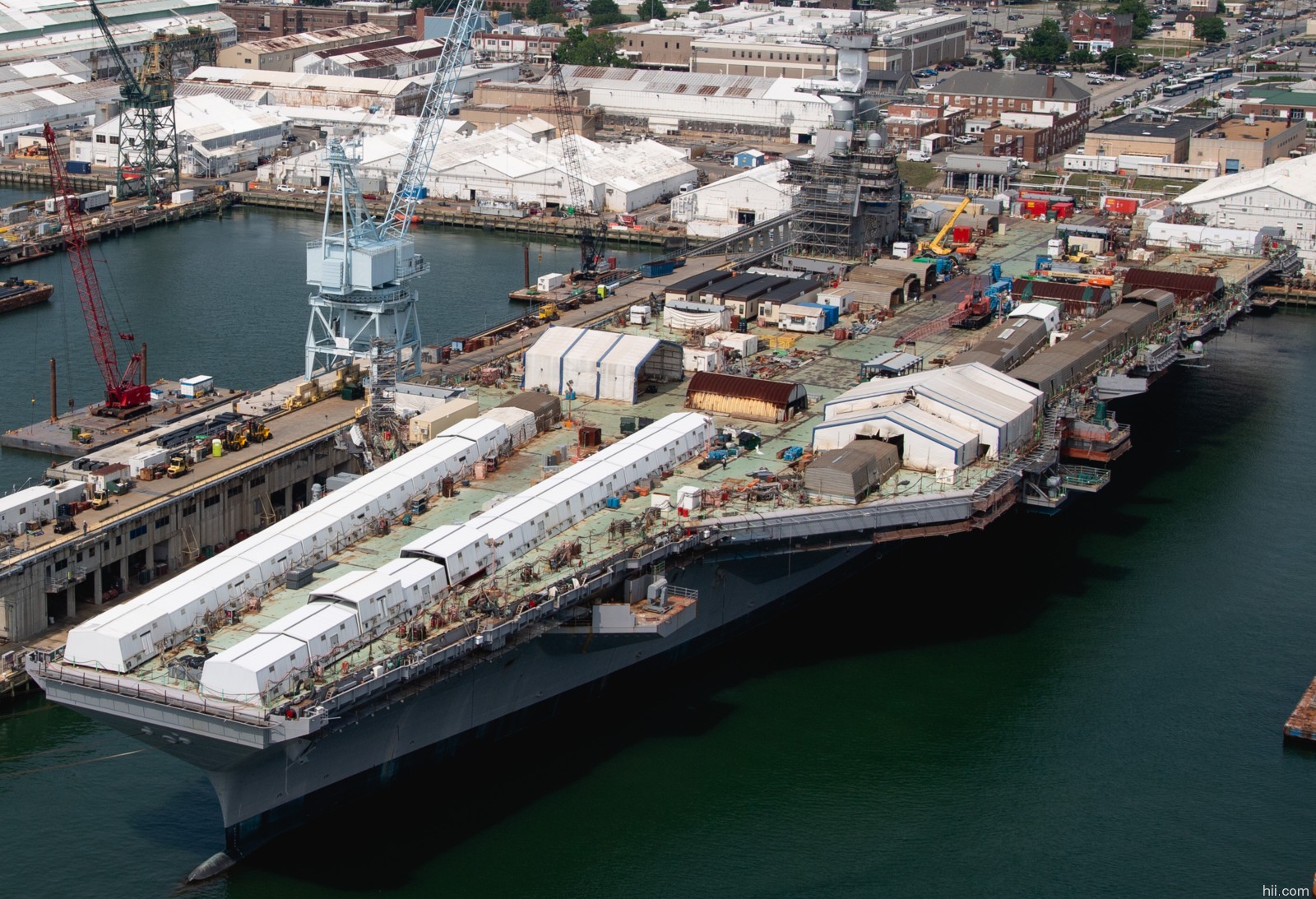 outfitting at HII Newport News Shipbuilding, Virginia - June 2023 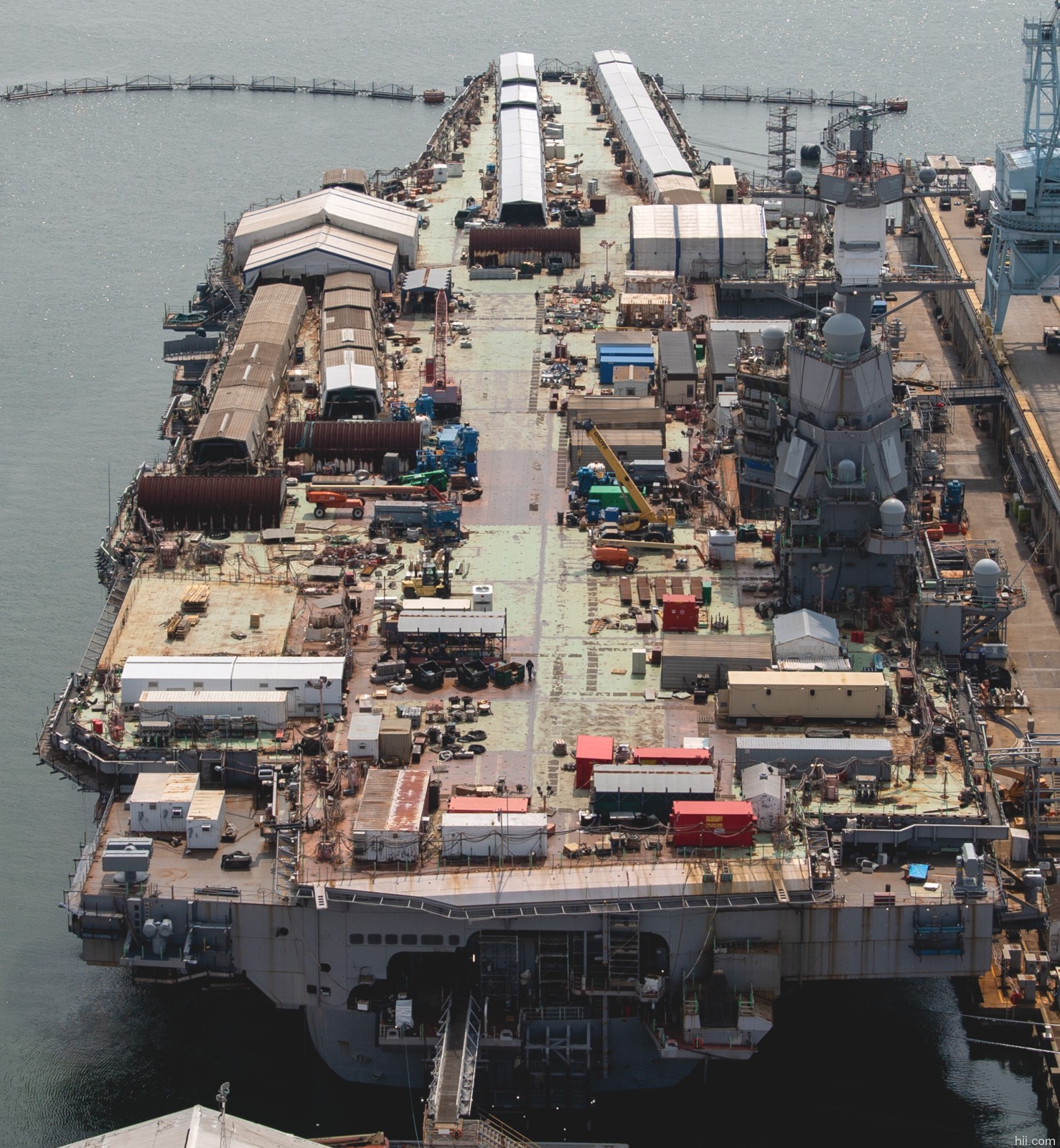 outfitting at HII Newport News Shipbuilding, Virginia - June 2023 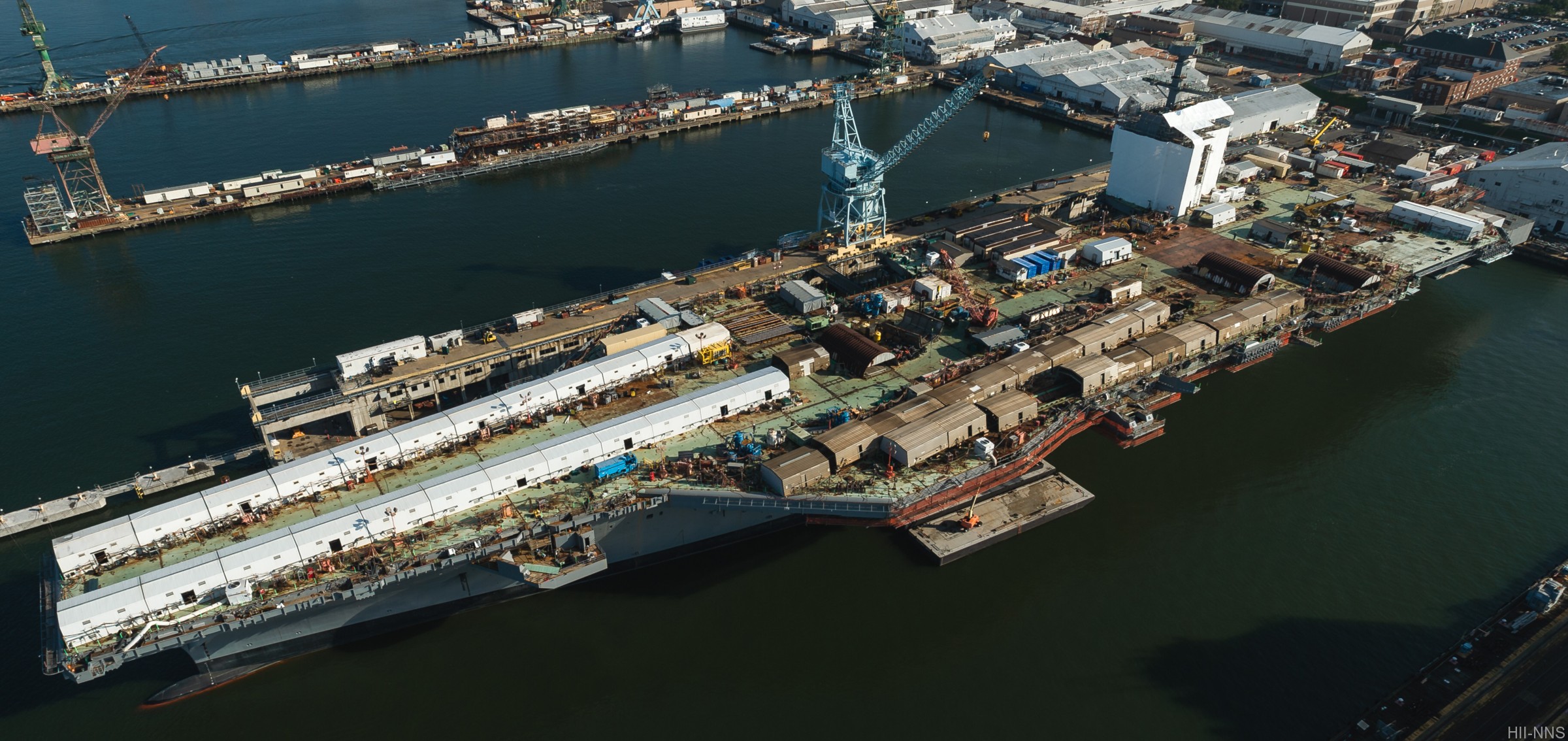 September 2020 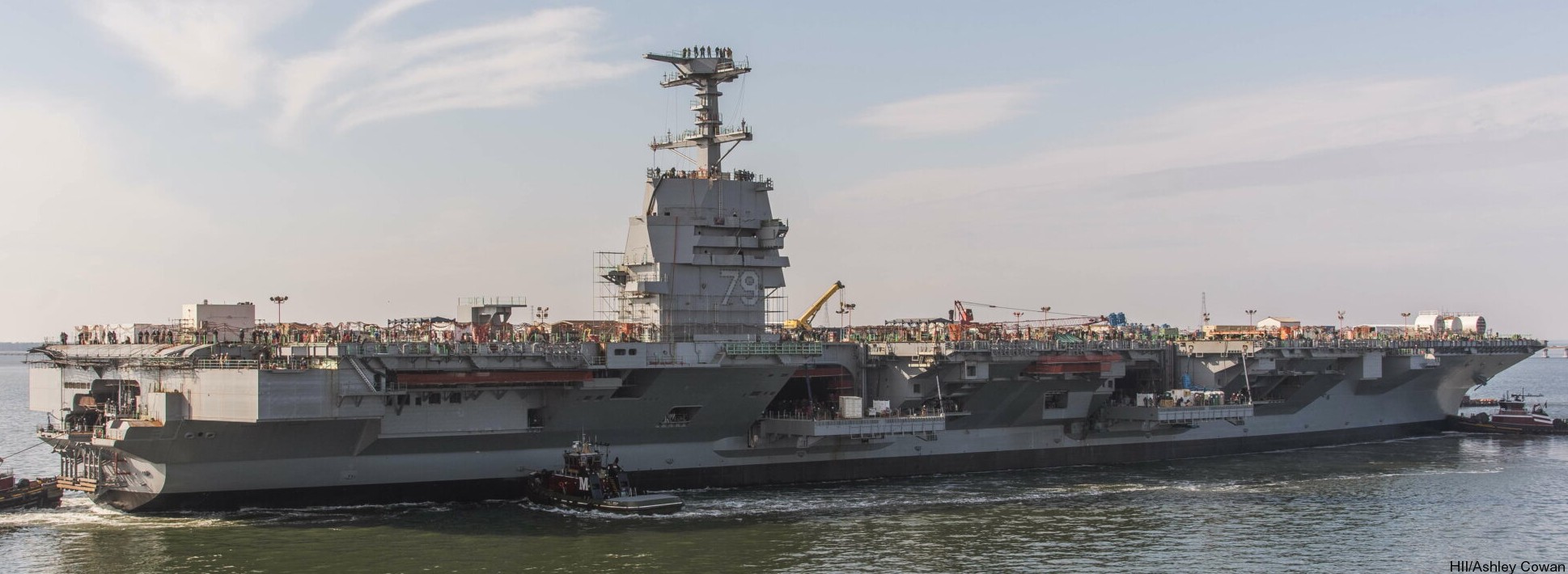 December 16, 2019 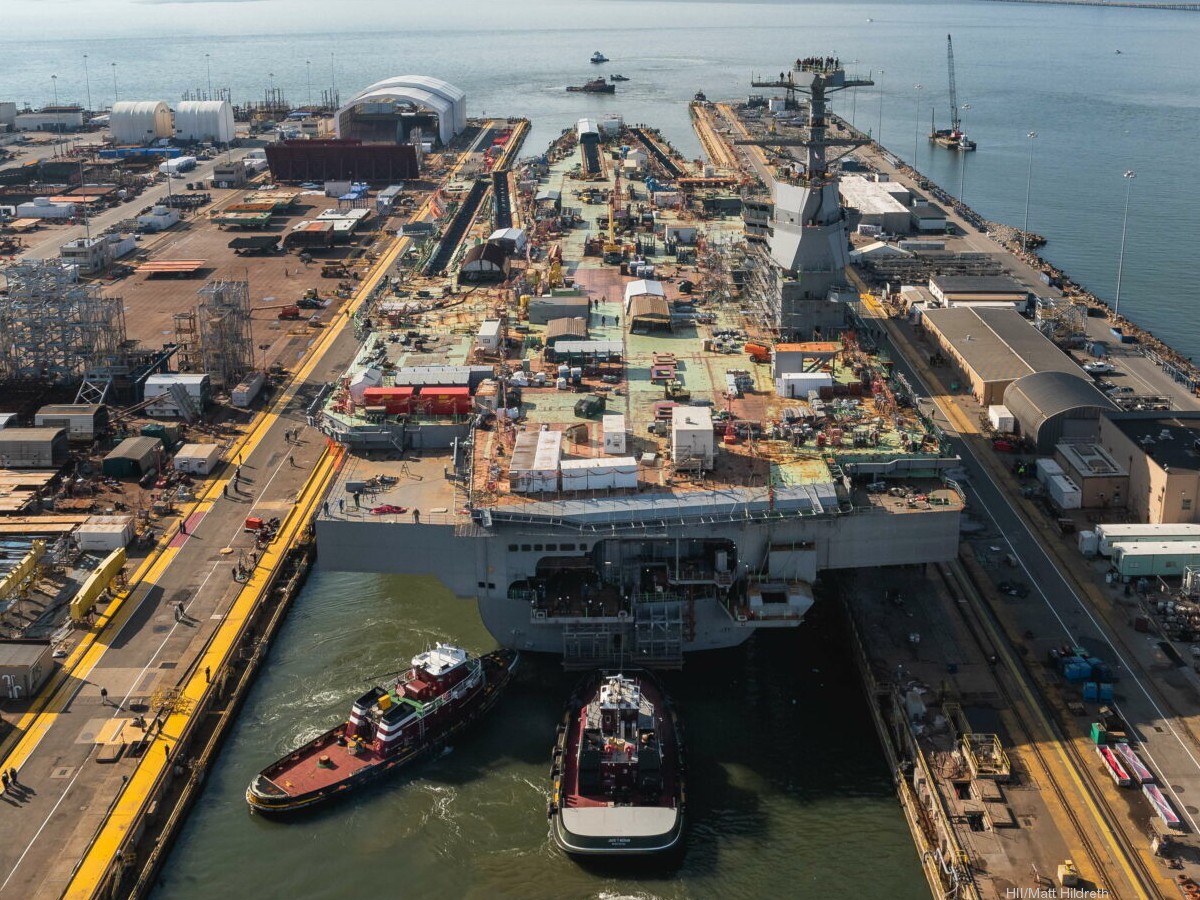 December 16, 2019 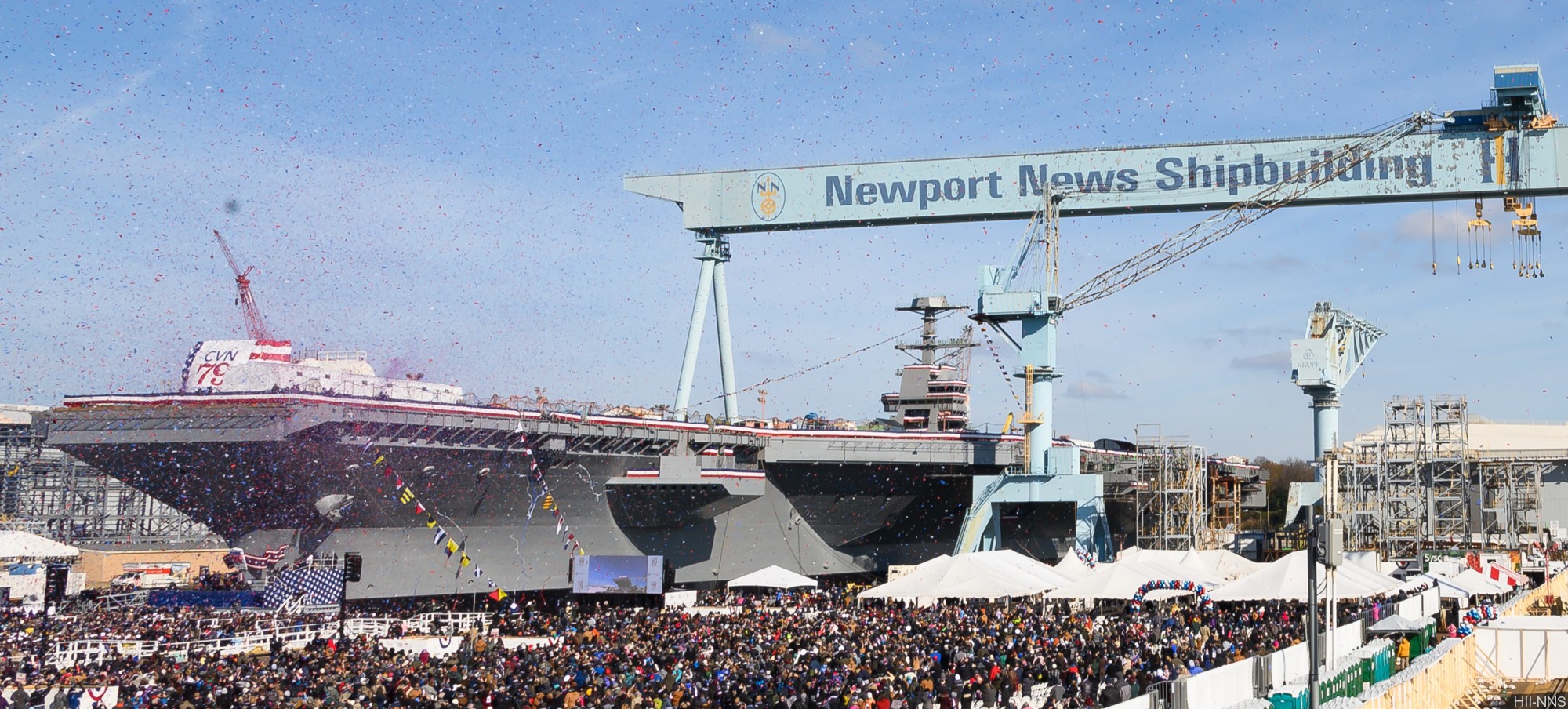 christening ceremony at HII Newport News Shipbuilding and Drydock Company, Virginia - December 7, 2019 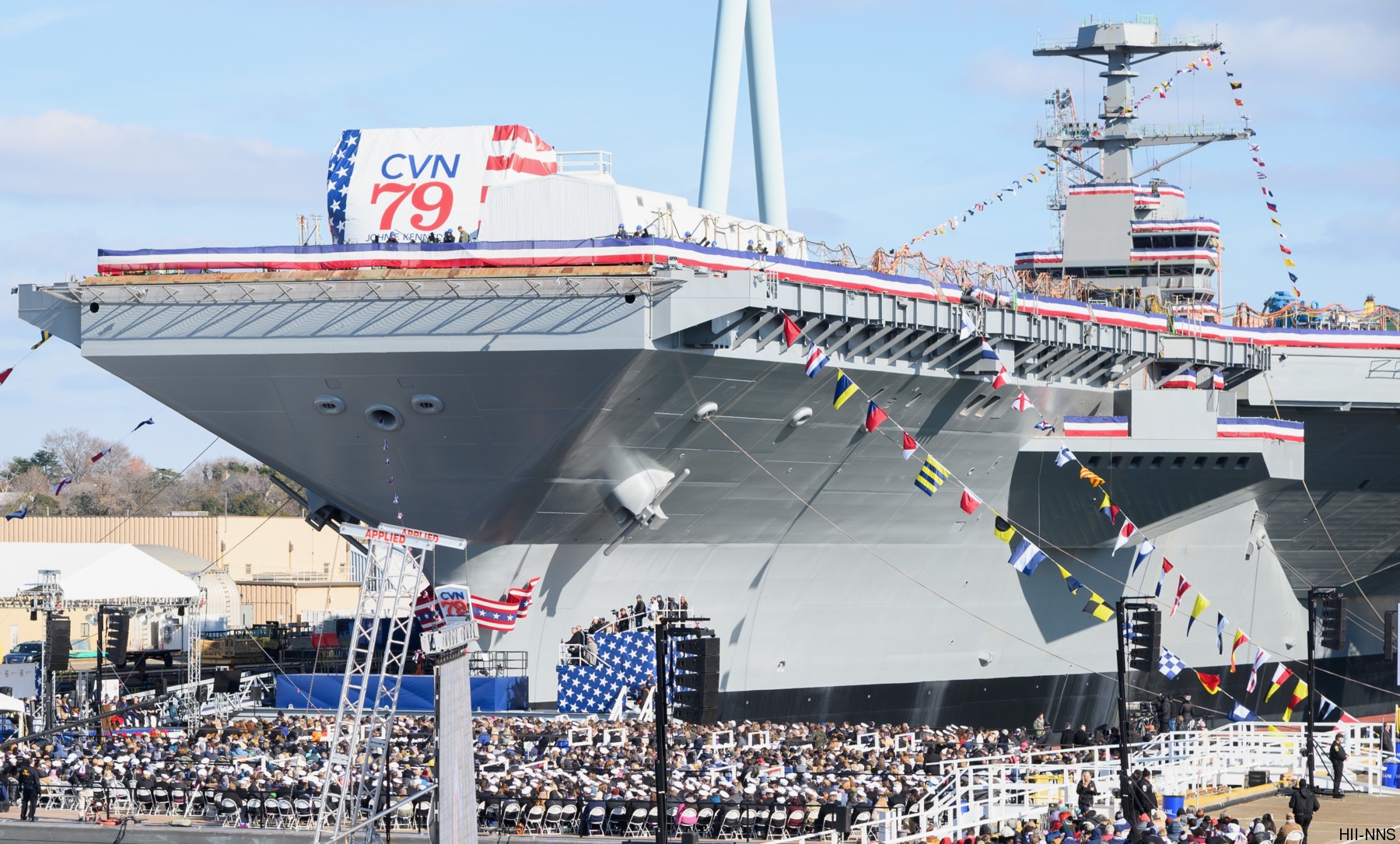 christening ceremony at HII Newport News Shipbuilding and Drydock Company, Virginia - December 7, 2019 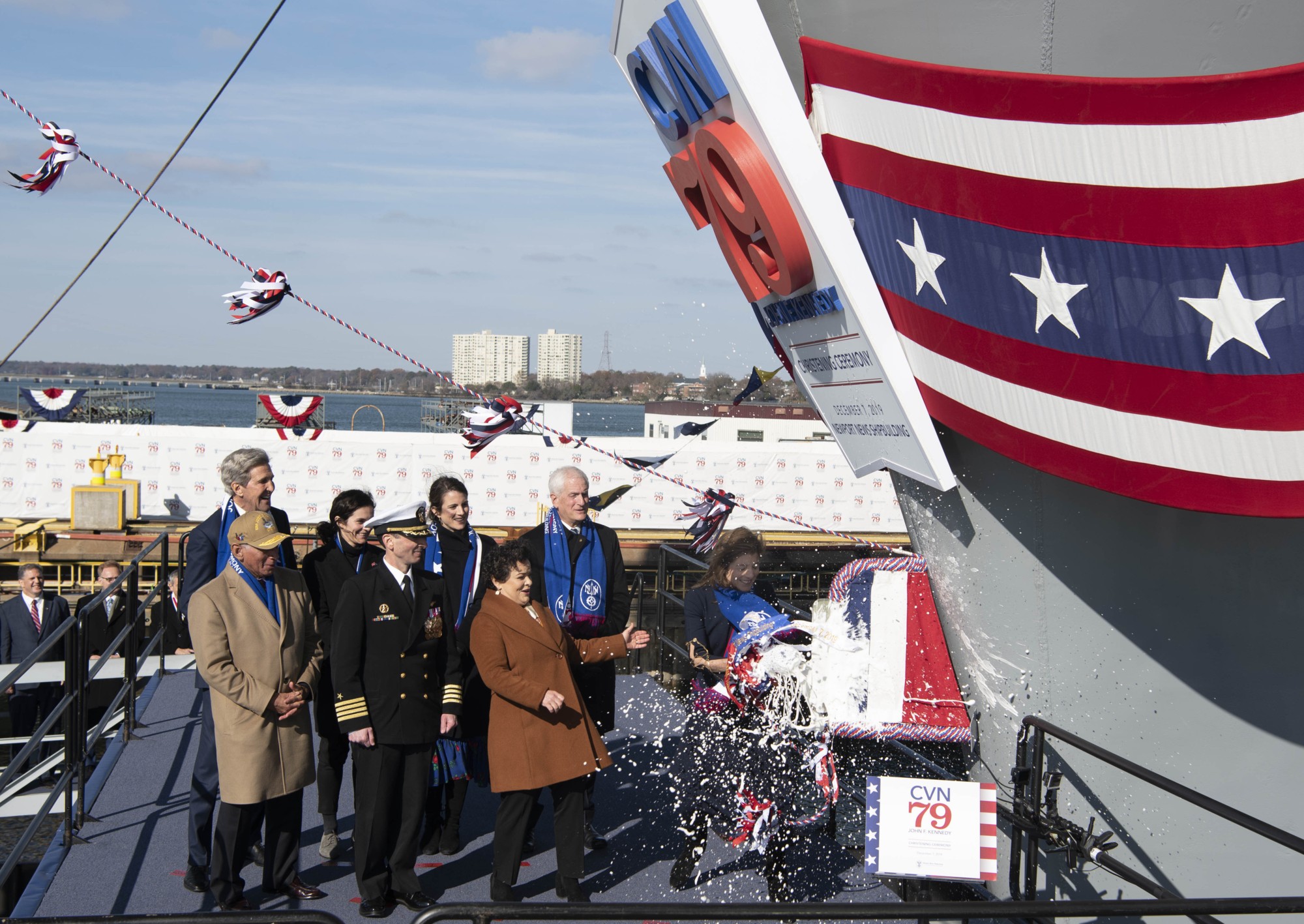 Caroline Bouvier Kennedy, President John F. Kennedy’s daughter, former US Ambassador to Japan and the ship’s sponsor, christens the aircraft carrier USS John F. Kennedy (CVN 79) - Newport News, Virginia - December 7, 2019 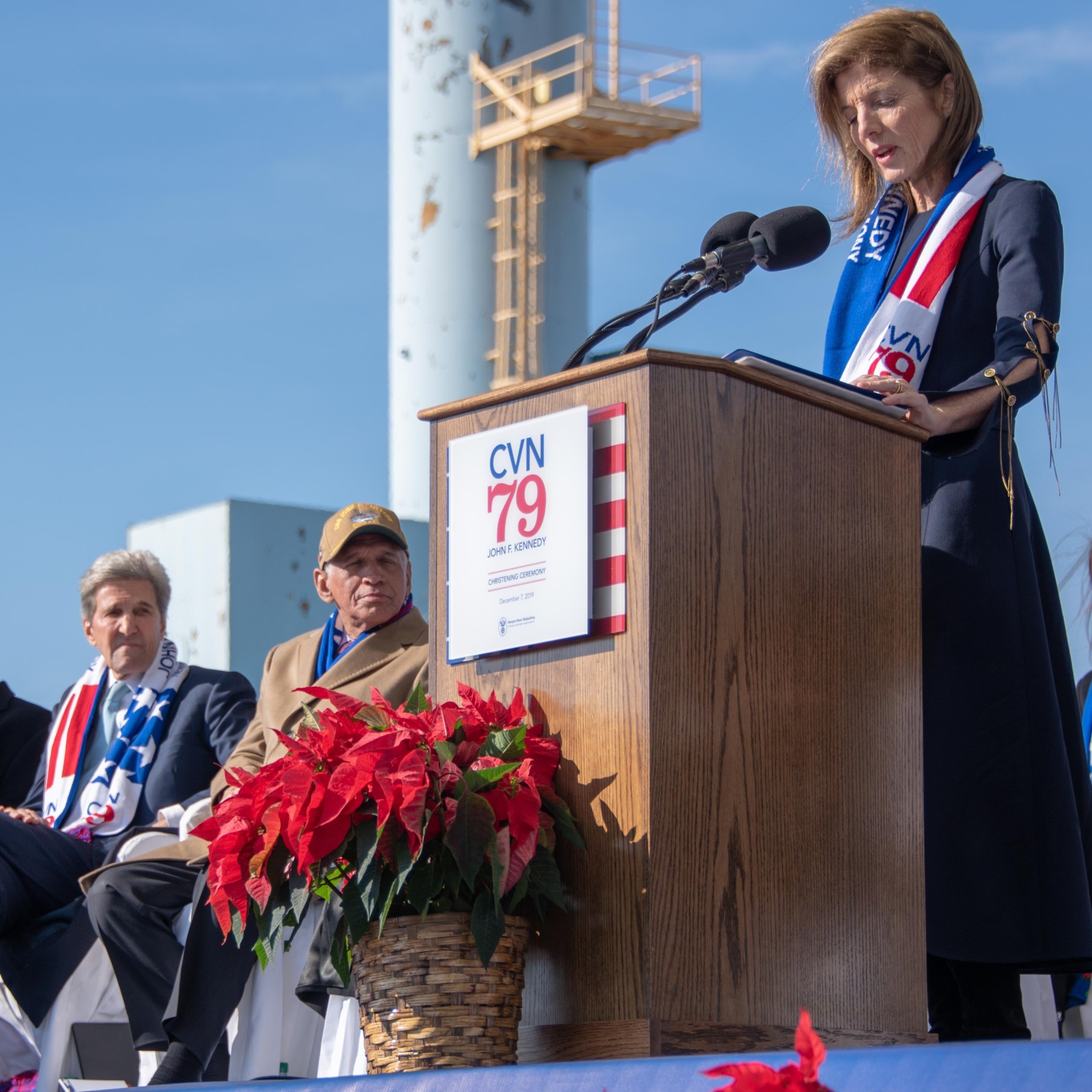 Caroline Bouvier Kennedy delivers remarks during the christening ceremony at HII Newport News Shipbuilding and Drydock Company, Virginia - December 7, 2019 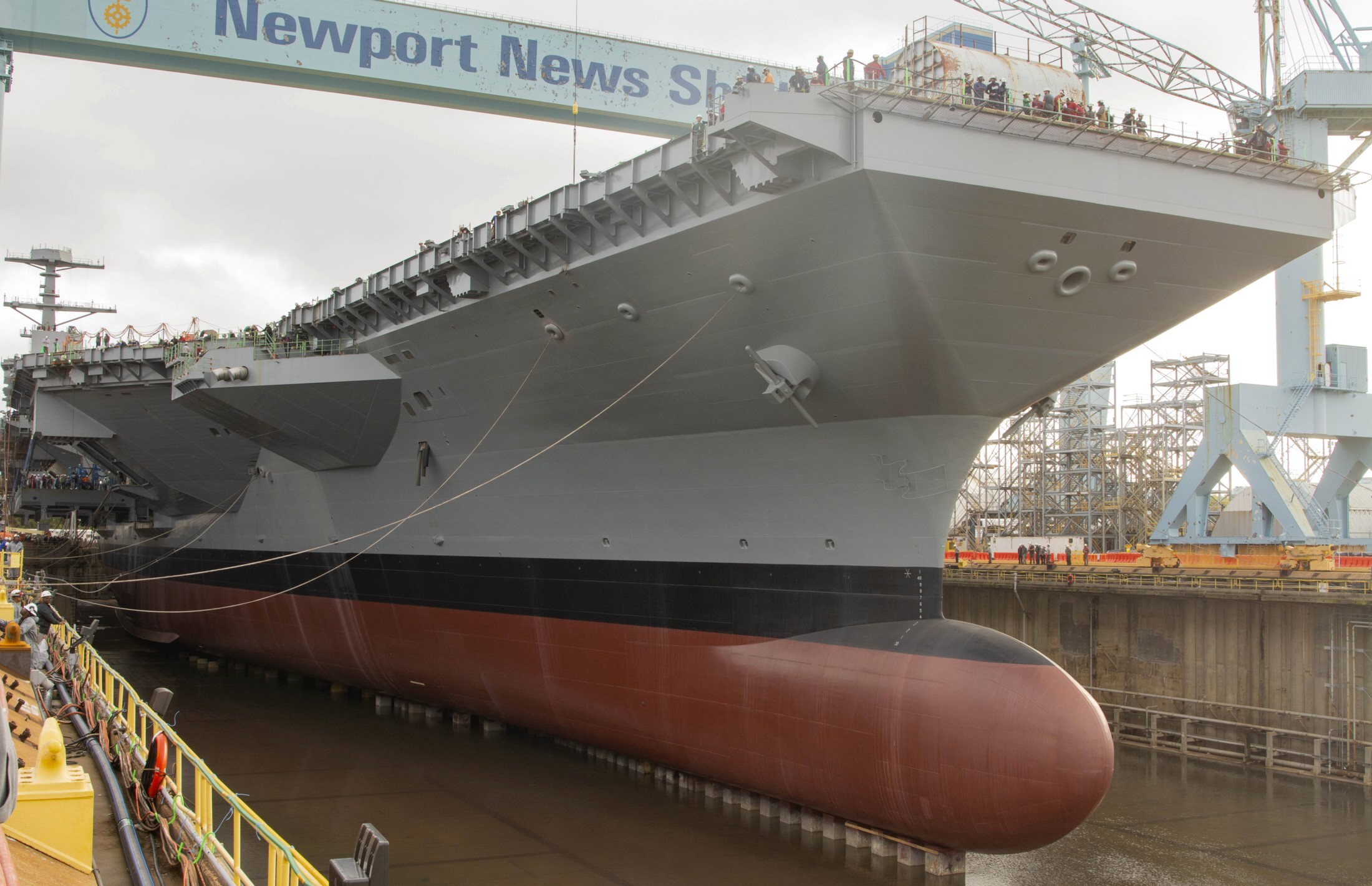 The aircraft carrier Pre-Commissioning Unit (PCU) John F. Kennedy (CVN 79) reaches another construction milestone, October 29, 2019, as its dry dock area is flooded three months ahead of its slated production schedule leading up to the christening of the second Ford-class aircraft carrier, scheduled for Dec. 7, 2019 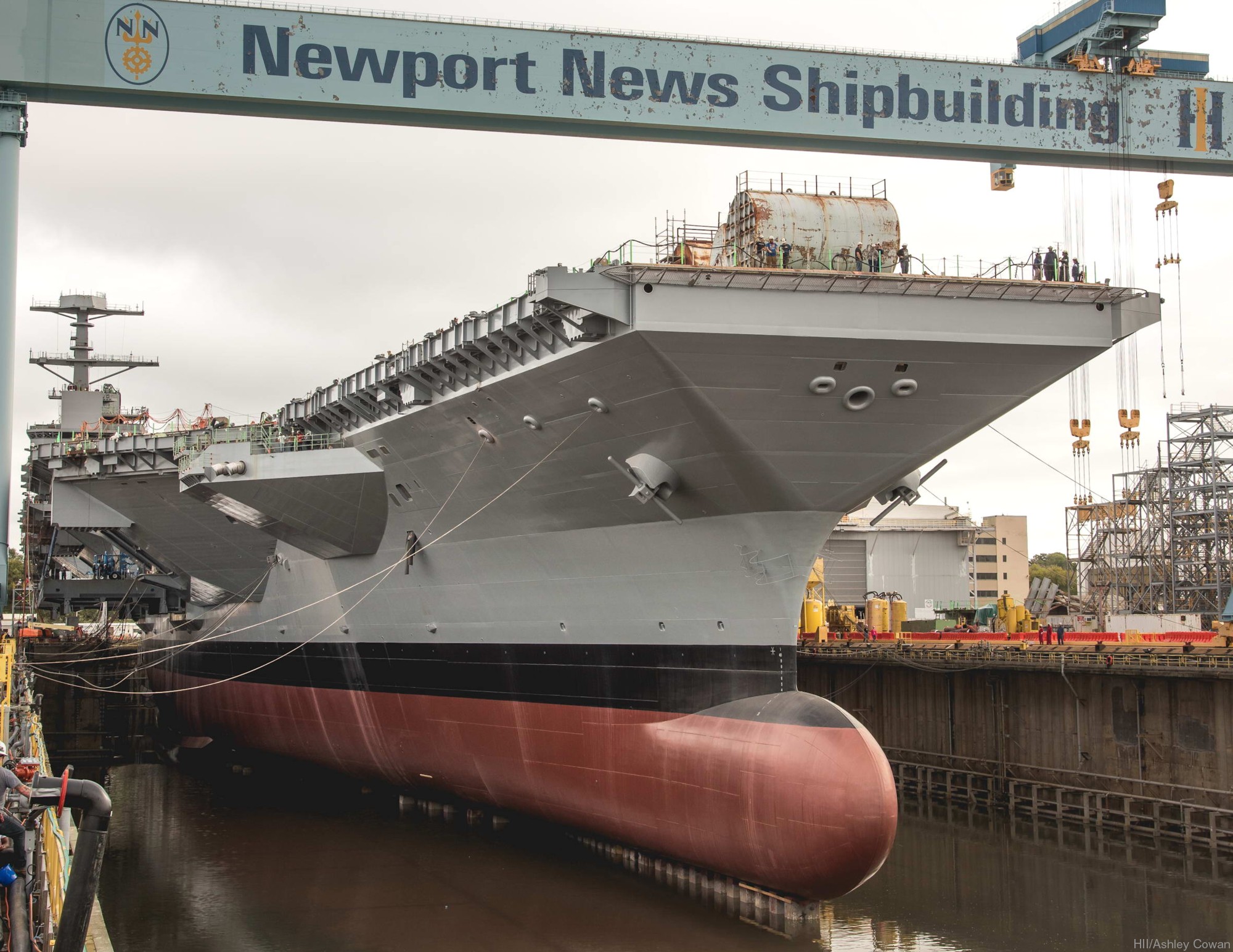 dry-dock flooding at Huntington Ingalls Industries Newport News Shipbuilding, Virginia - October 29, 2019 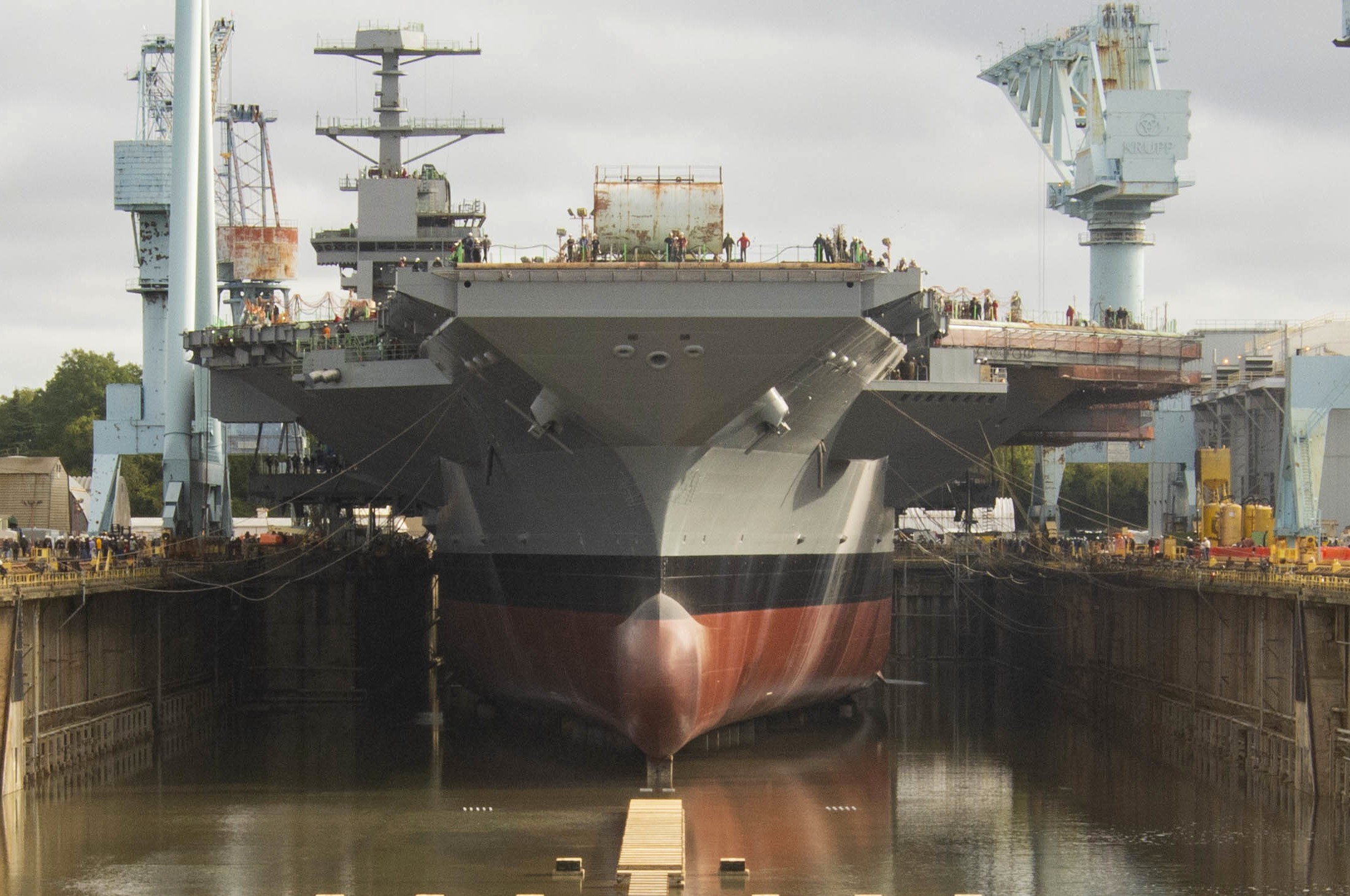 dry-dock flooding at Huntington Ingalls Industries Newport News Shipbuilding, Virginia - October 29, 2019 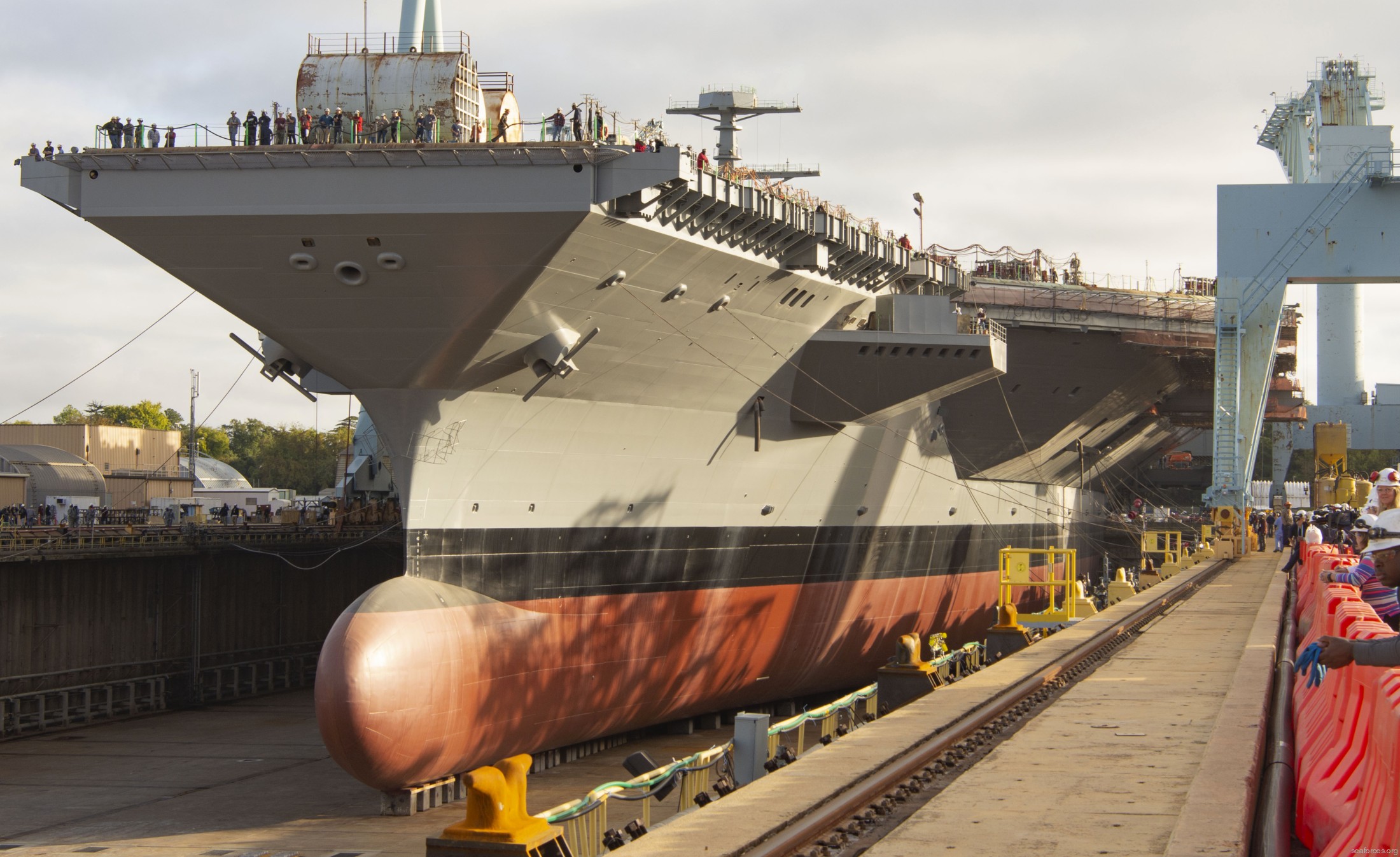 at Huntington Ingalls Industries Newport News Shipbuilding, Virginia - October 2019 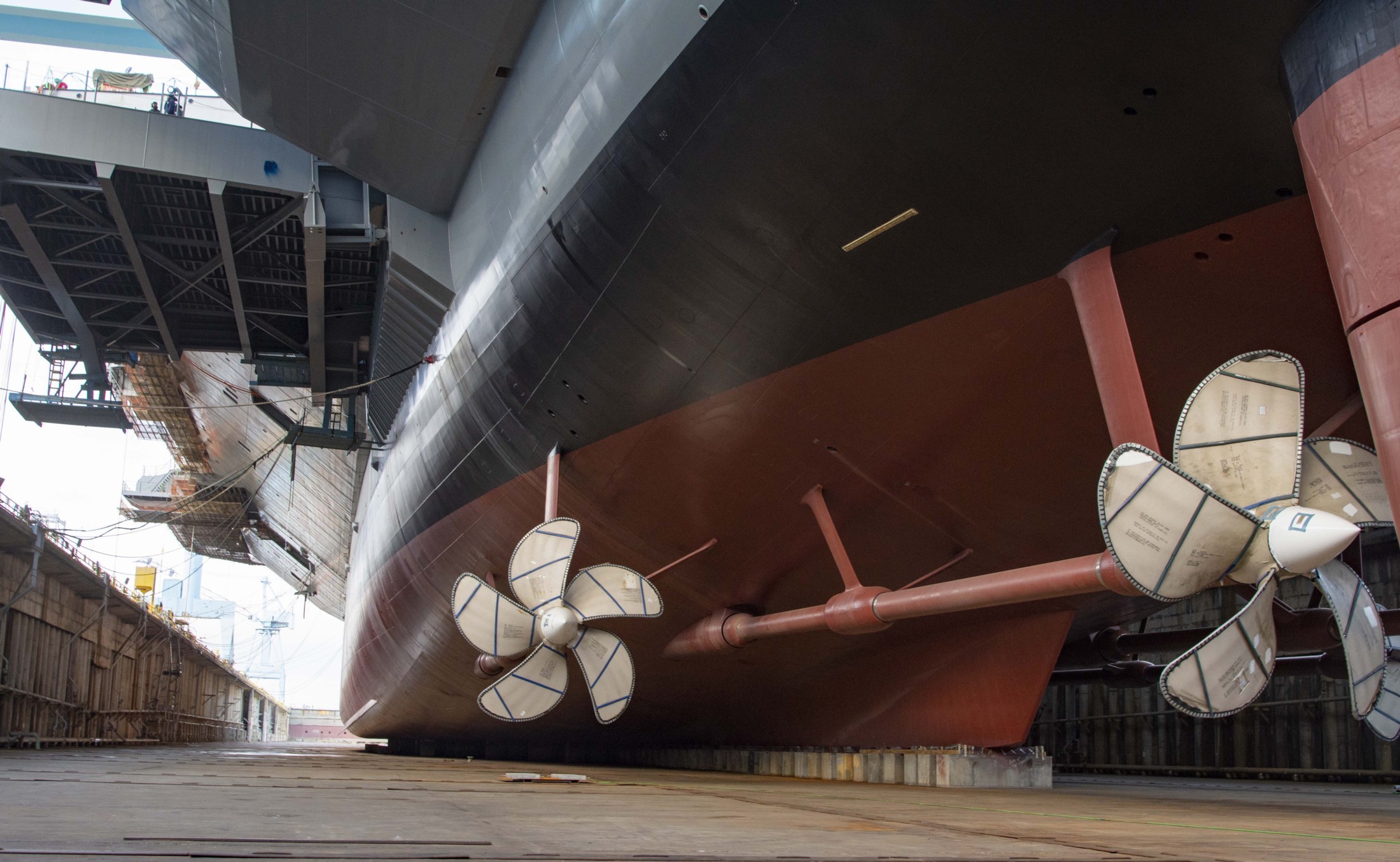 preparing to flood the dry dock at Huntington Ingalls Industries Newport News Shipbuilding, Virginia - October 2019 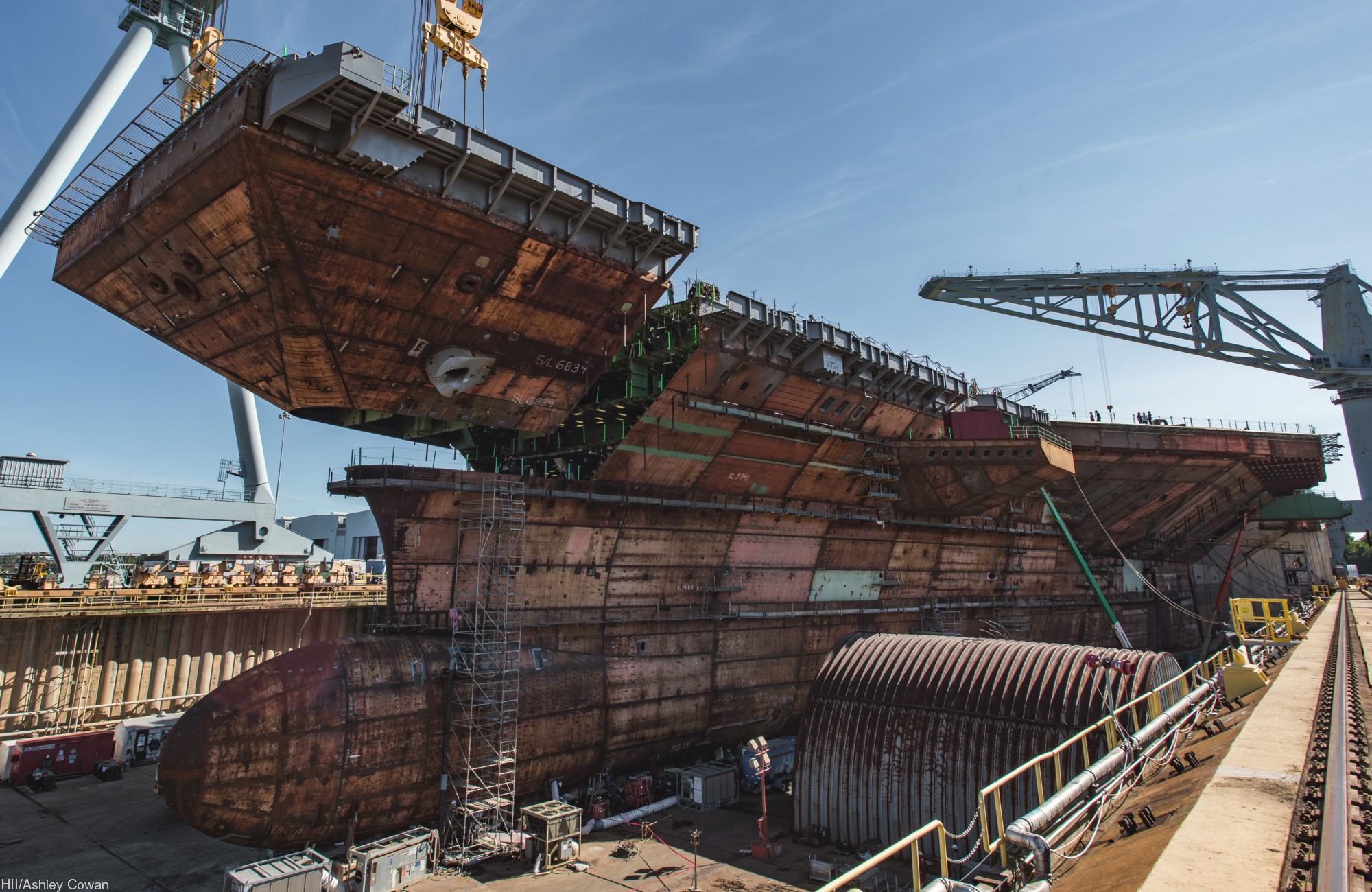 The upper bow unit of the future USS John F. Kennedy (CVN 79) is fitted to the primary structure of the ship at Huntington Ingalls Industries Newport News Shipbuilding - July 10, 2019 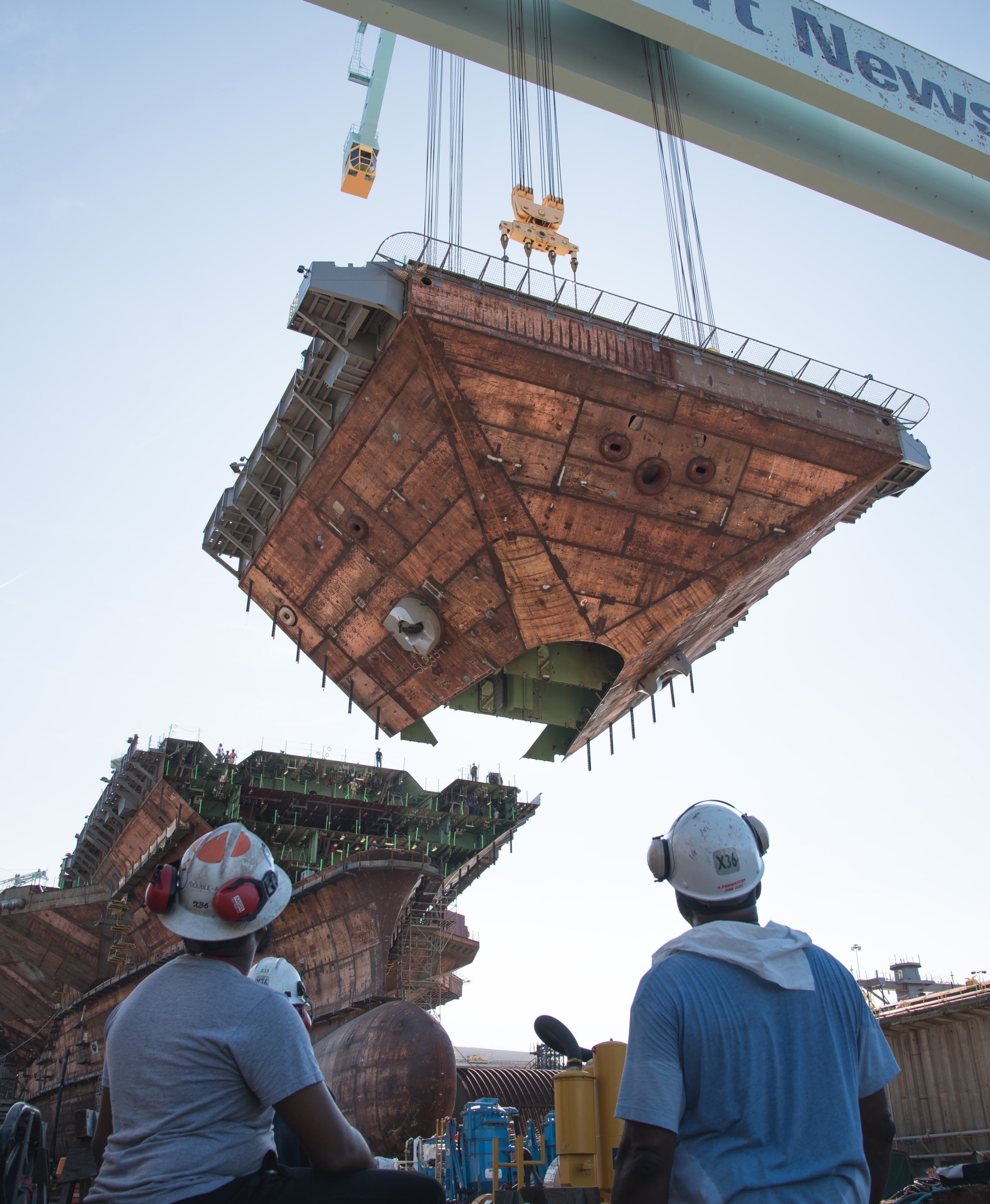 The upper bow unit of the future USS John F. Kennedy (CVN 79) is fitted to the primary structure of the ship at Huntington Ingalls Industries Newport News Shipbuilding - July 10, 2019 (HII image via USN) 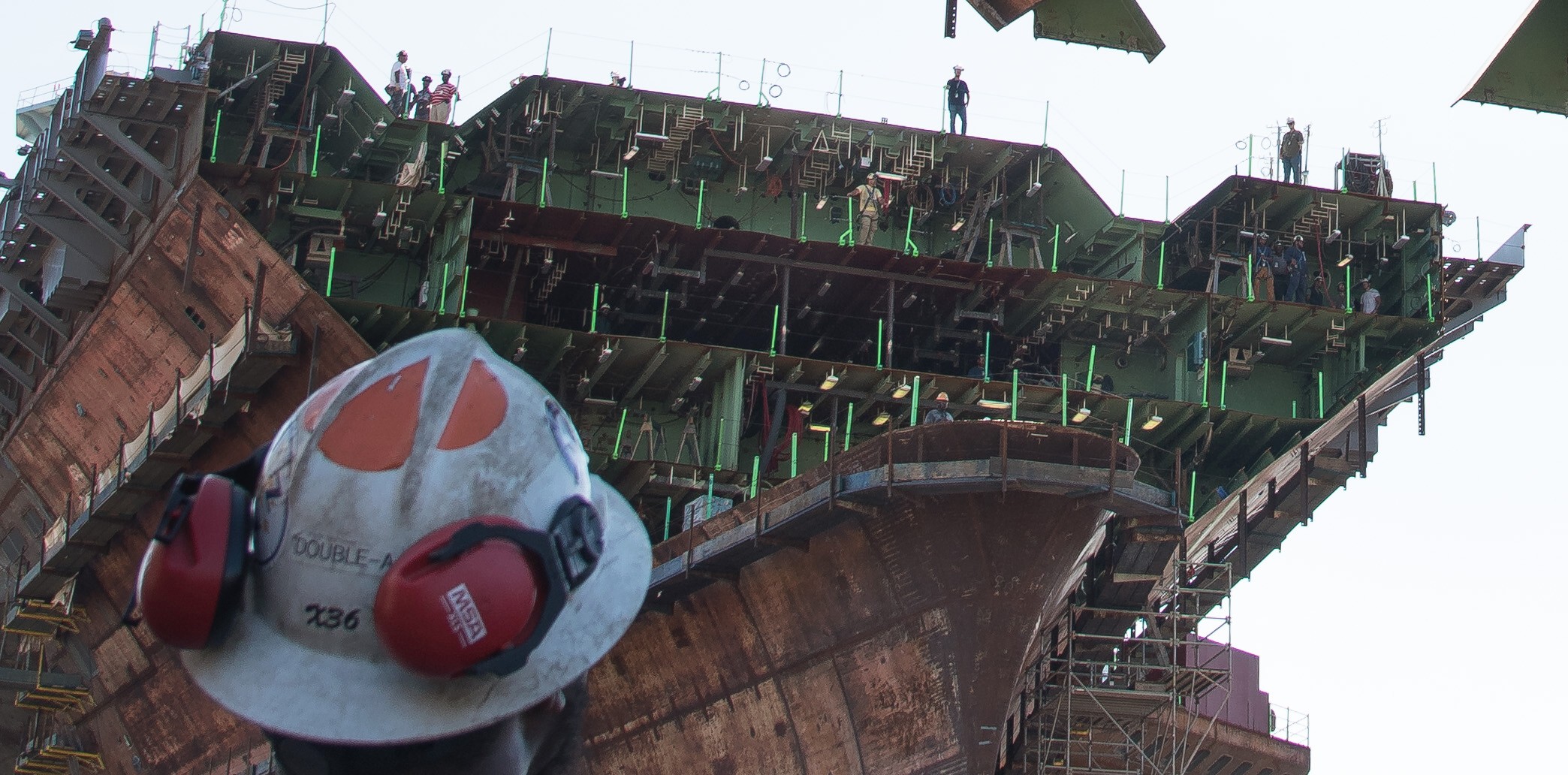 excerpt from image above 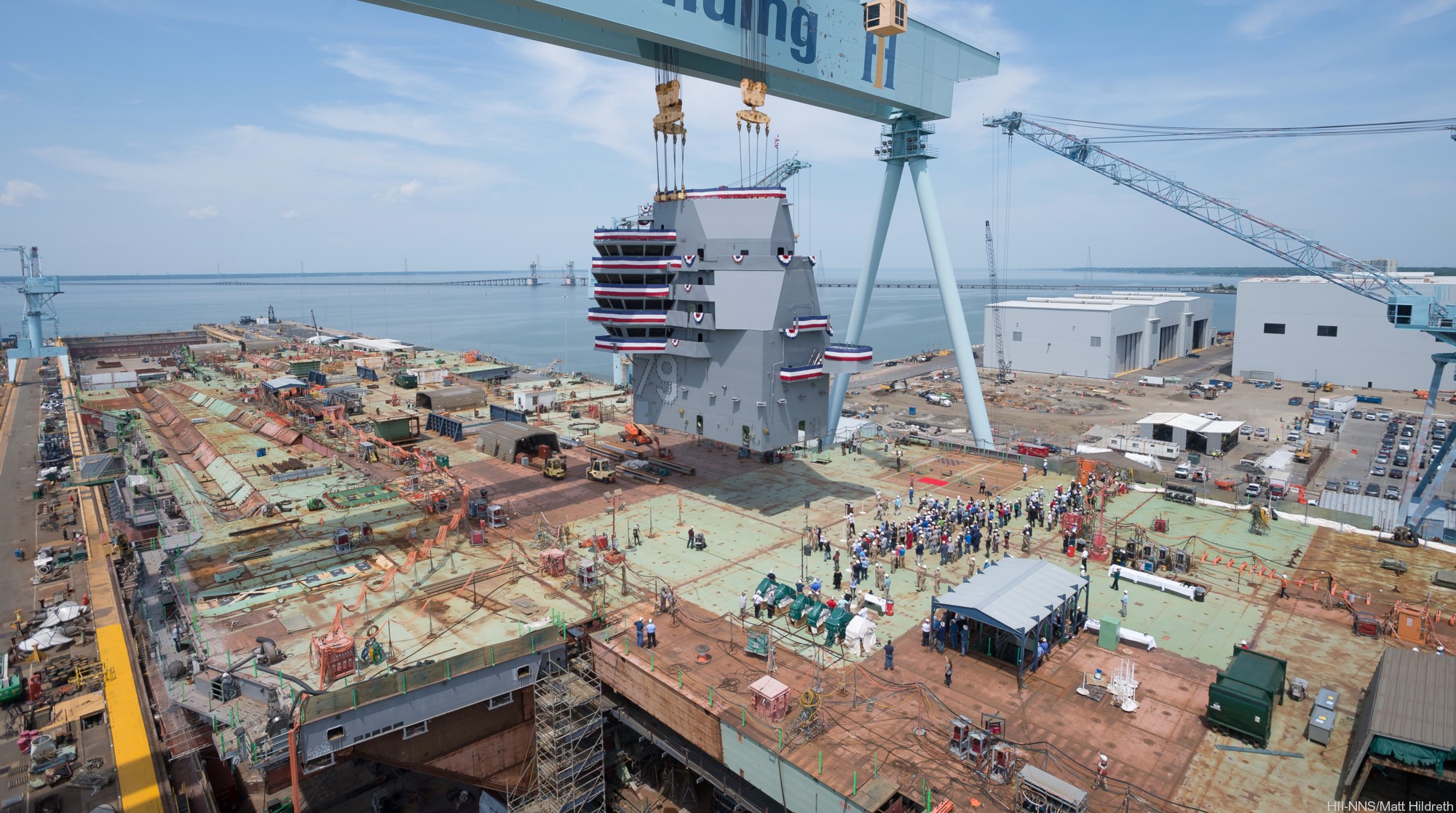 The island of the aircraft carrier USS John F. Kennedy (CVN 79) is landed onto the flight deck during a mast-stepping ceremony at Huntington Ingalls Industries Newport News Shipbuilding in Newport News, Virginia - May 29, 2019 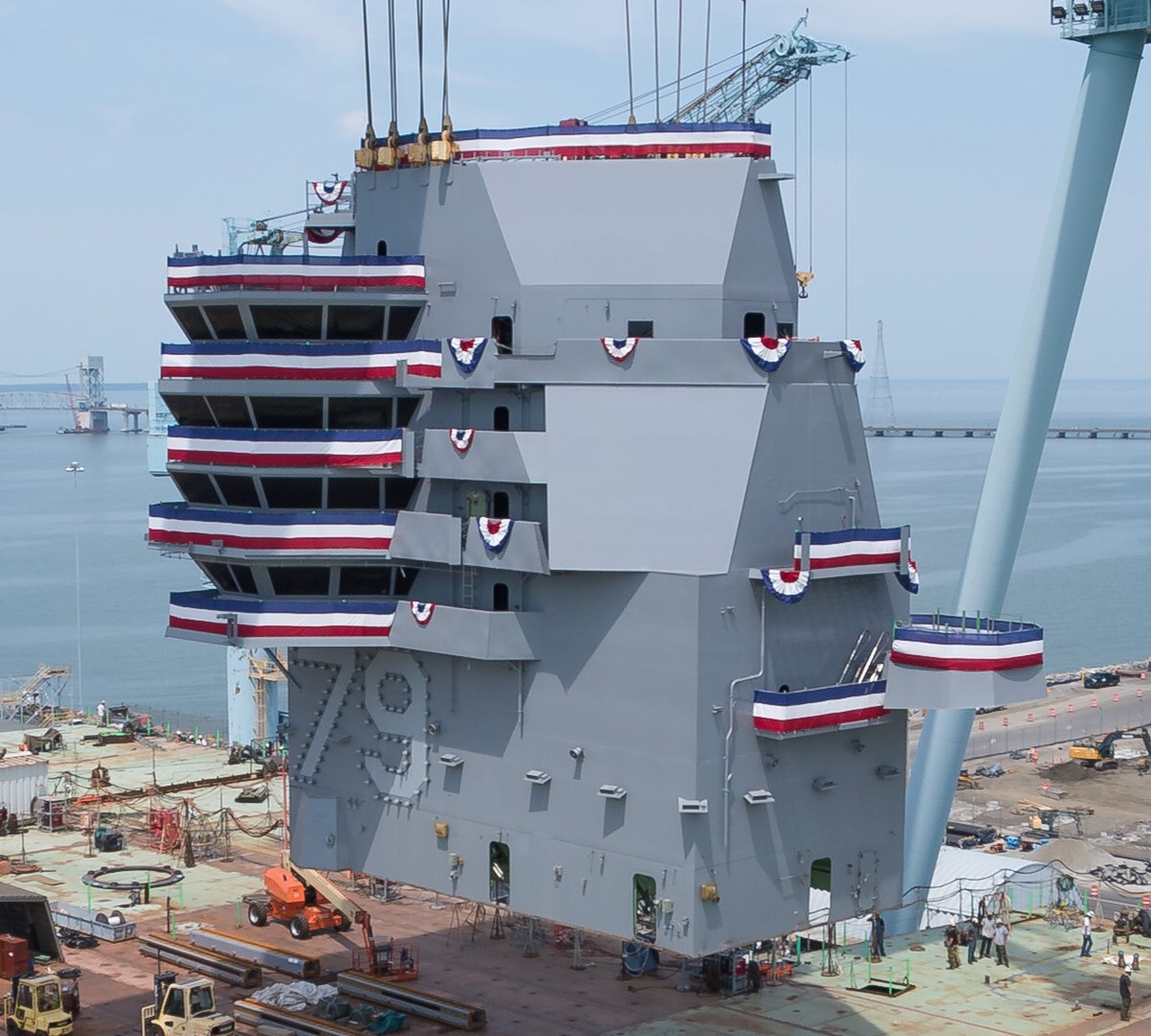 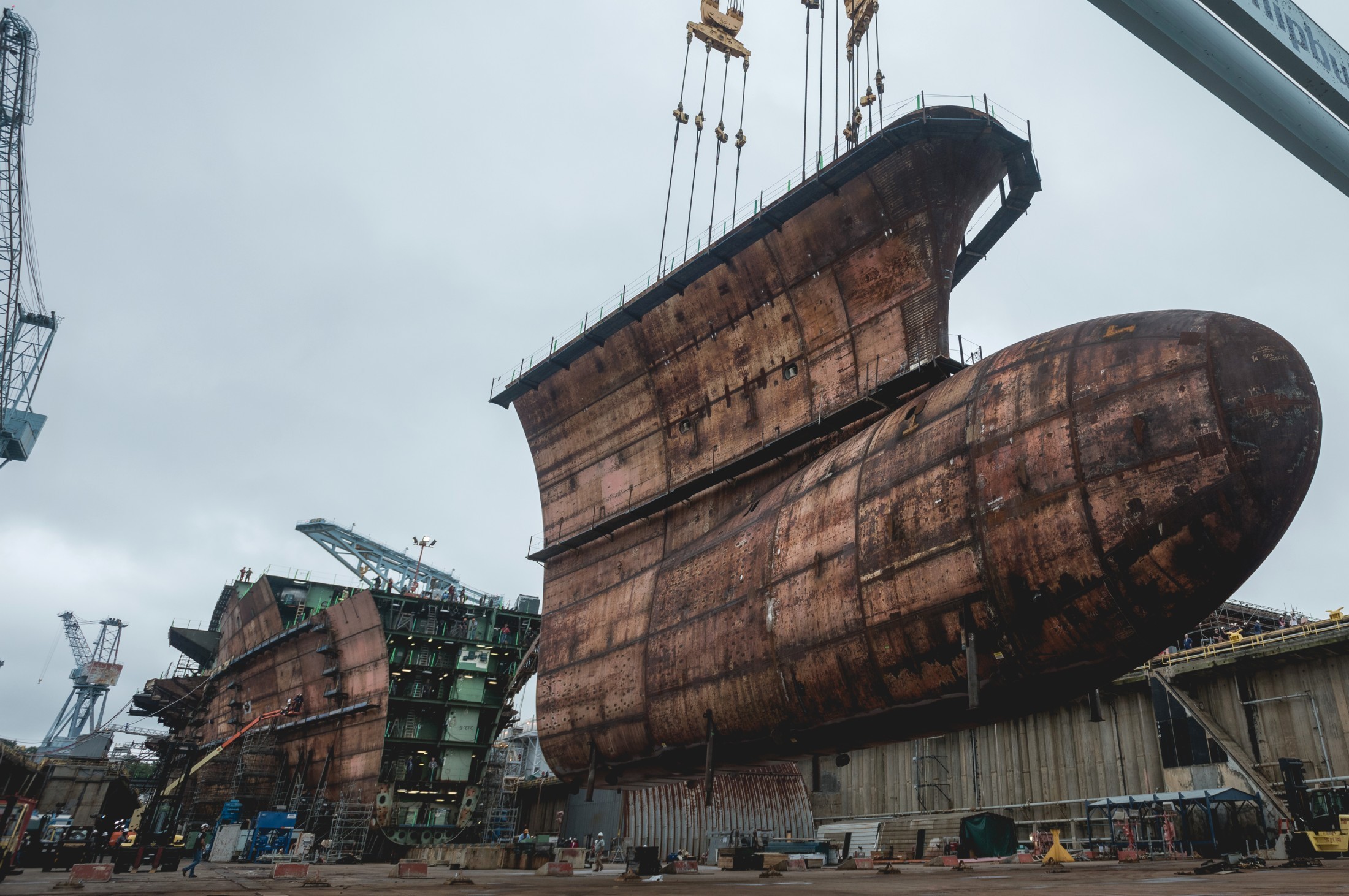 The final piece of the underwater hull of the future aircraft carrier USS John F. Kennedy (CVN 79) is lowered into place at Huntington Ingalls Industries Newport News Shipbuilding. John F. Kennedy is the second Gerald R. Ford-class aircraft carrier and the second aircraft carrier to be named after the 35th president. The 1,096-foot hull is longer than three football fields and more than 3,000 shipbuilders and 2,000 suppliers from across the country are supporting construction of the ship. The christening for John F. Kennedy is scheduled for late 2019. U.S. Navy photo courtesy of Huntington Ingalls Industries by Matt Hildreth - September 2018 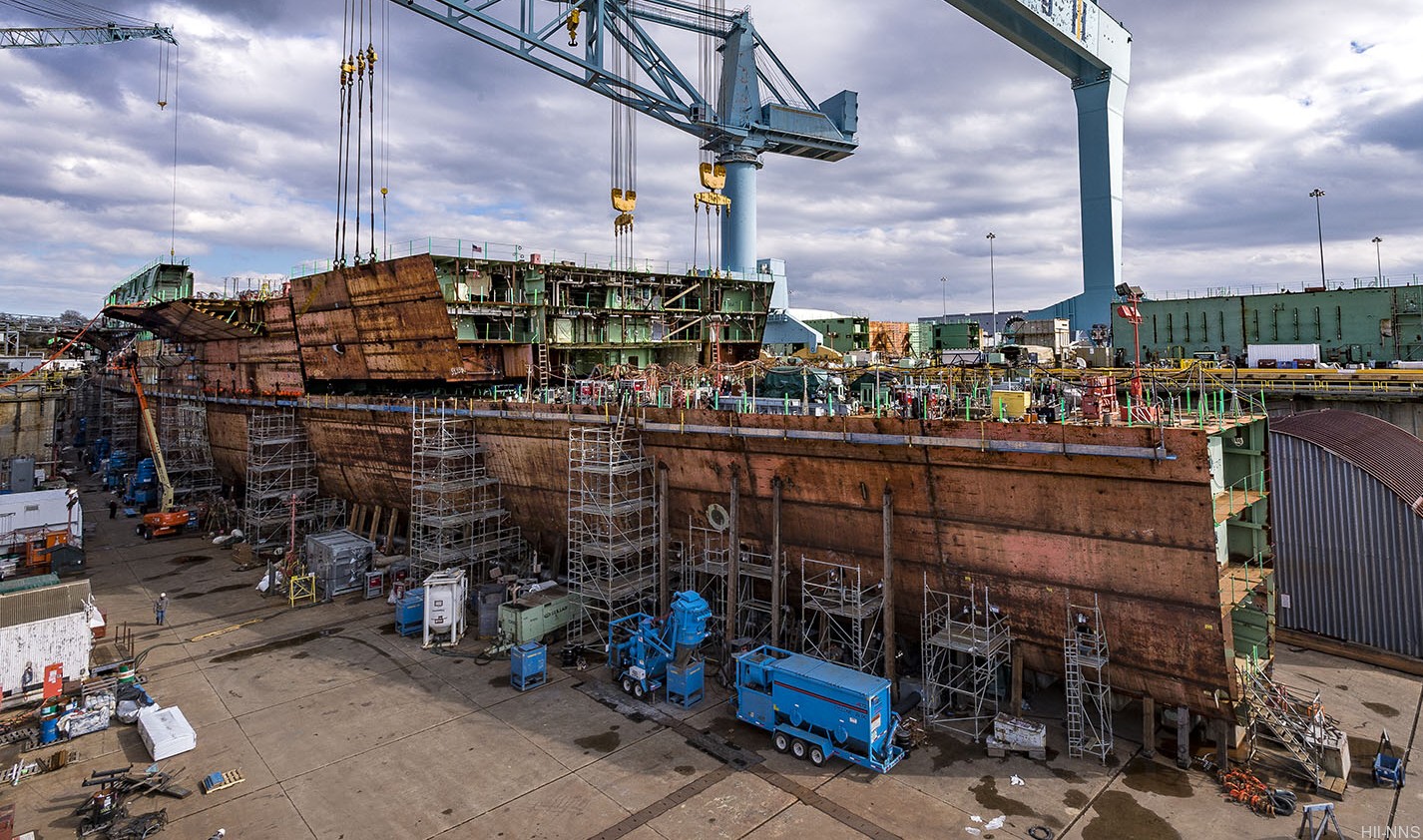 February 2018 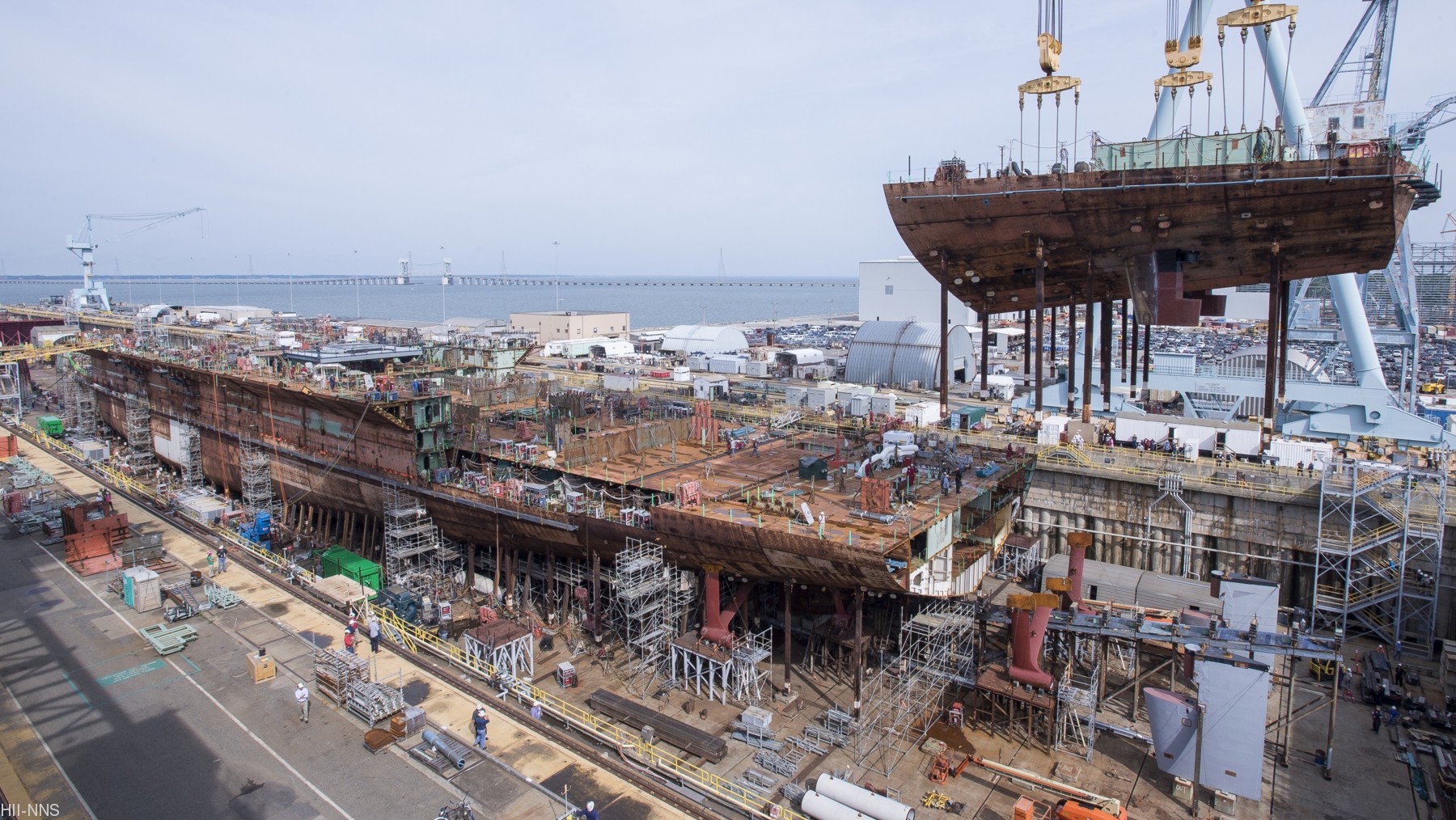 A crane moves the lower stern into place on the nuclear-powered aircraft carrier USS John F. Kennedy (CVN 79) at Huntington Ingalls Shipbuilding in Newport News, Virginia. The second Gerald R. Ford-class aircraft carrier is now 50 percent structurally complete - June 2017 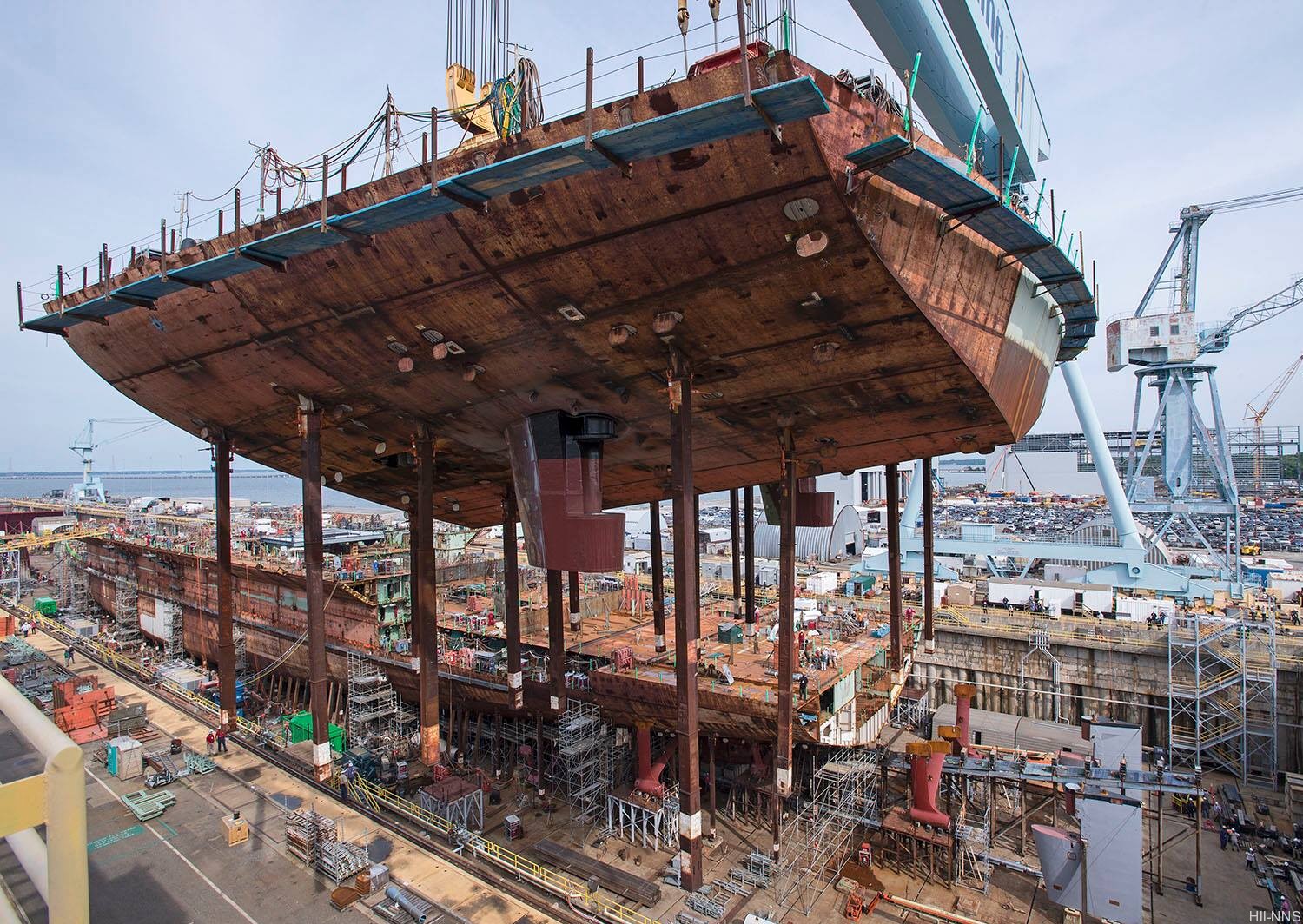 June 2017 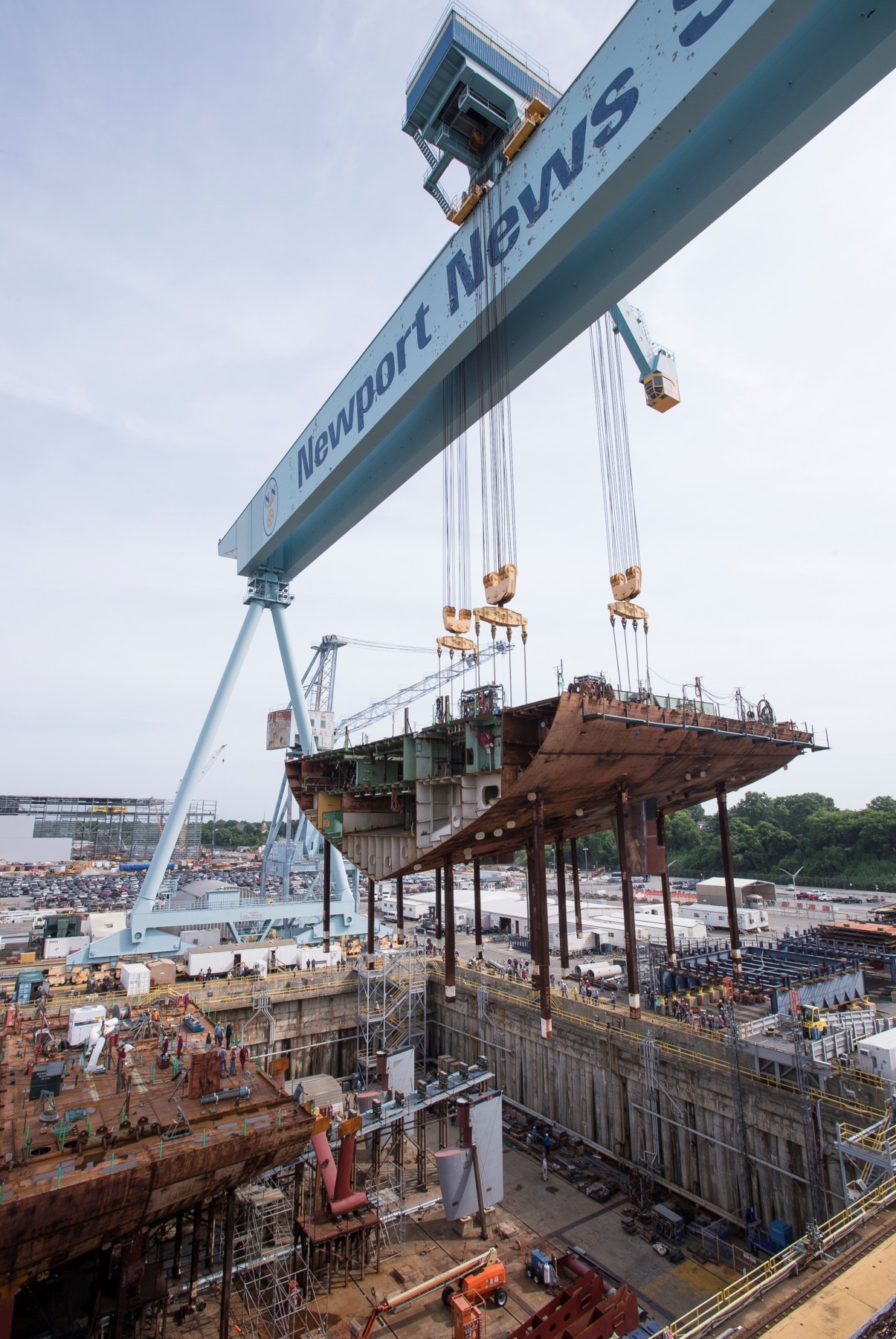 June 2017 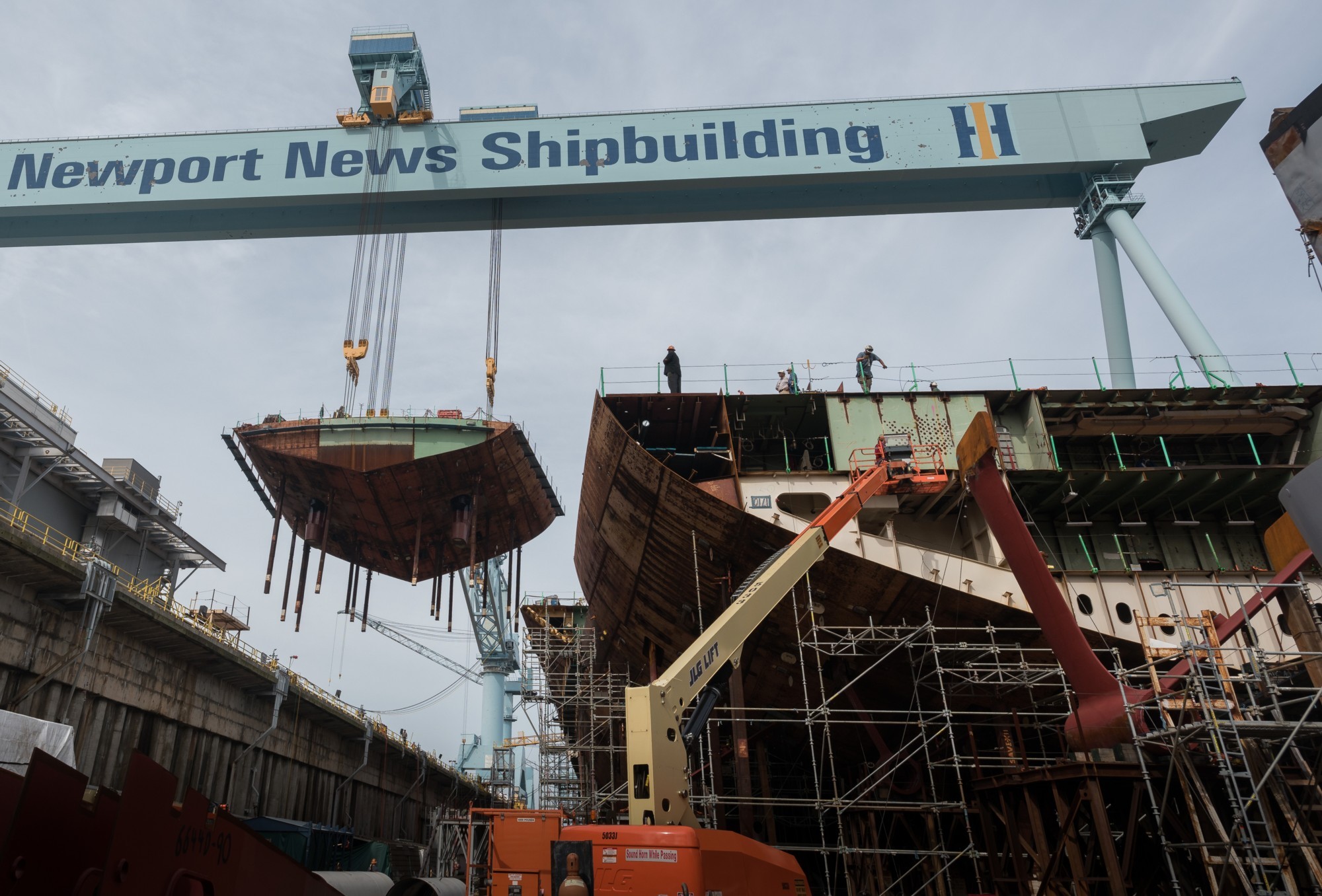 June 2017 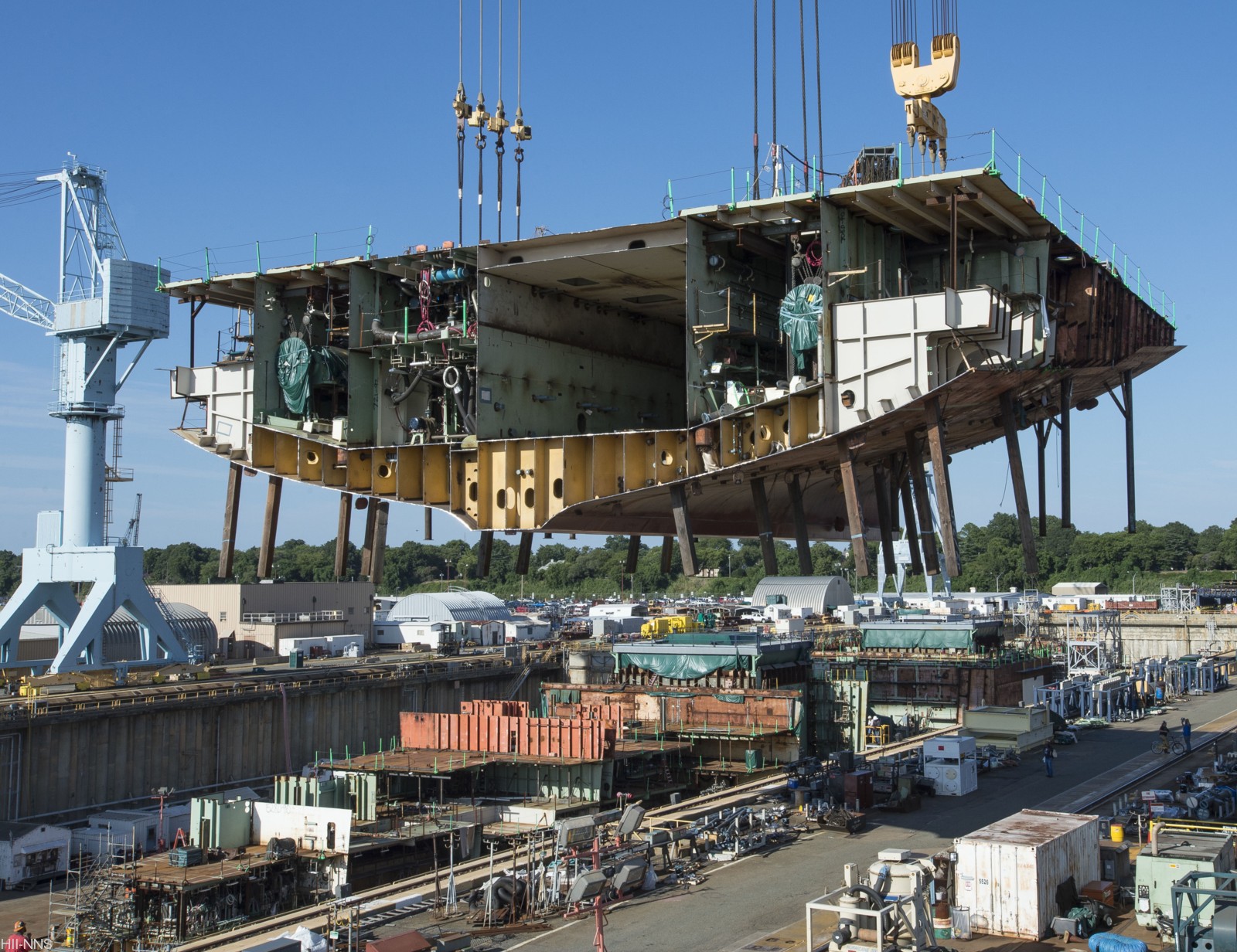 August 2016 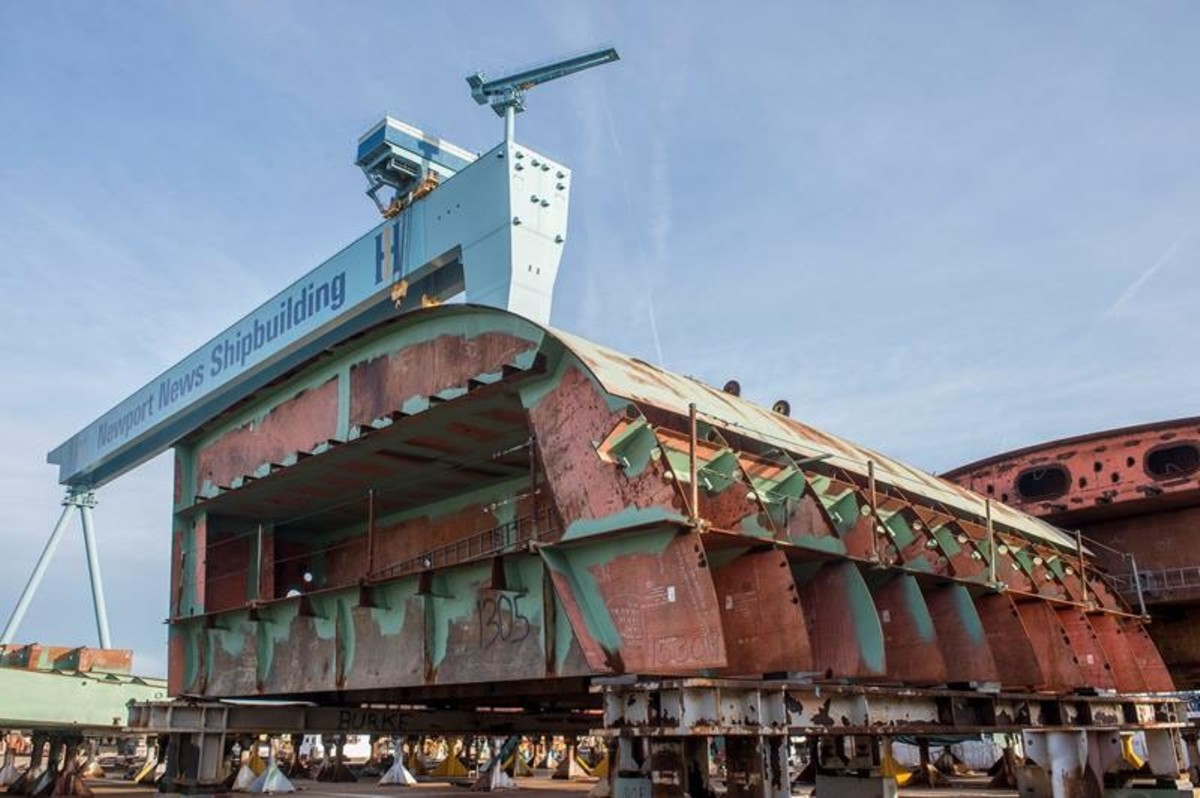 Newport News, Virginia - March 2014 (Huntington Ingalls photo via NNS) 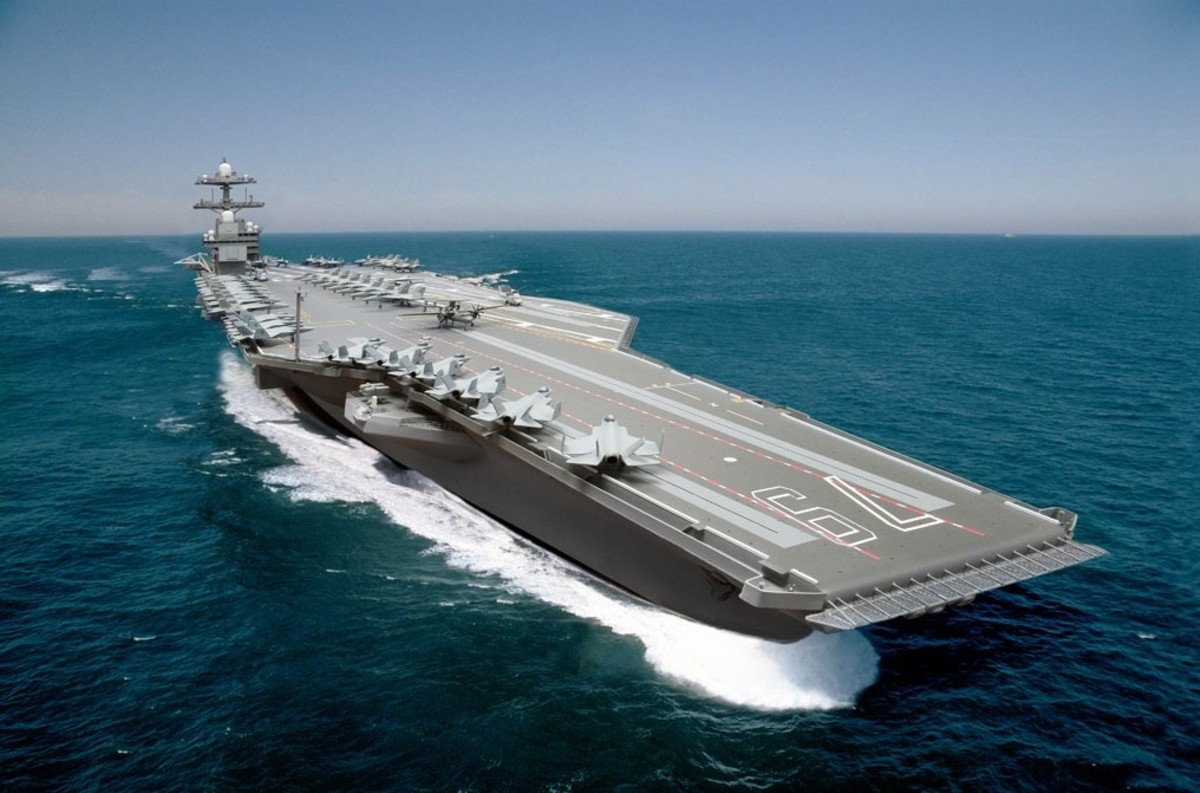 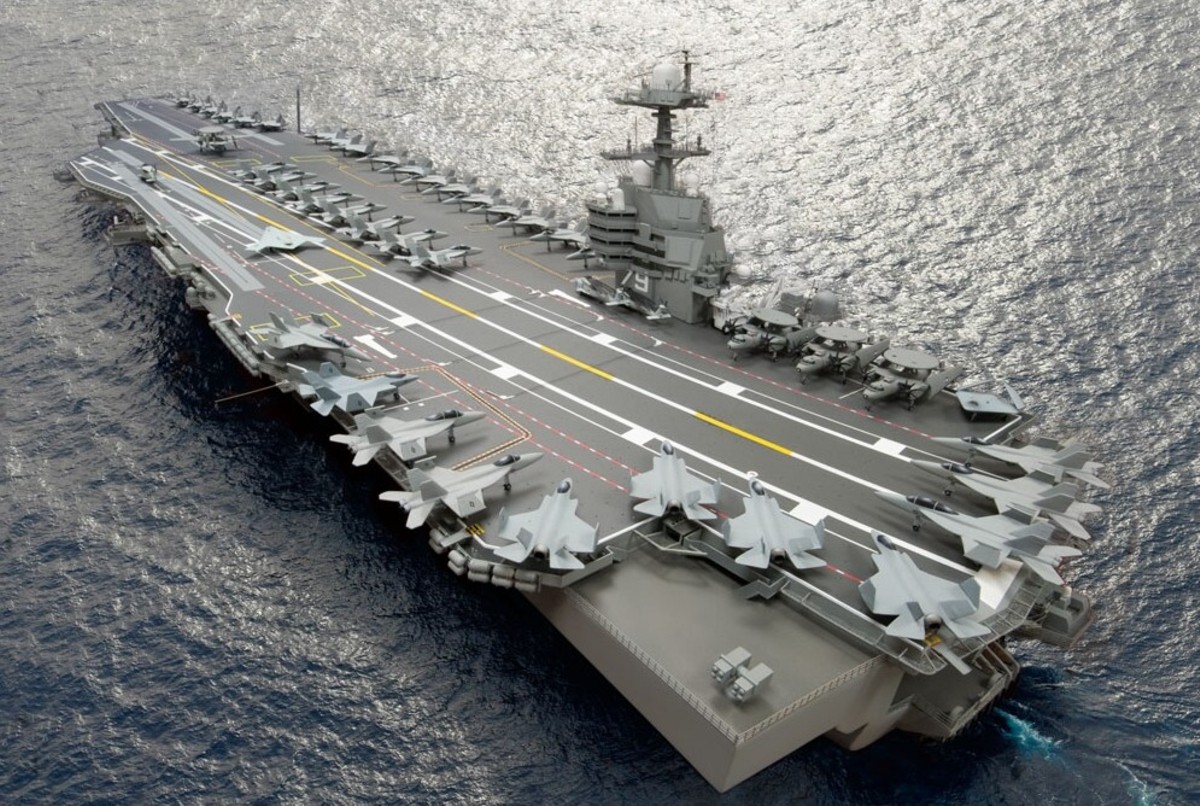 |
||
John F. Kennedy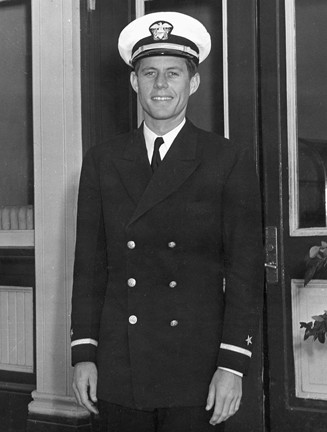
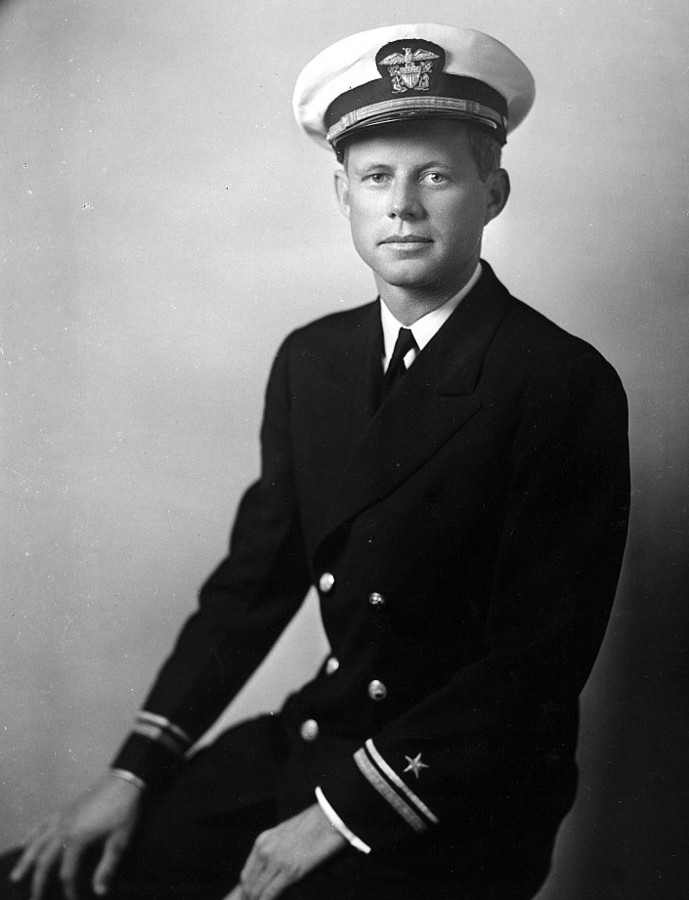 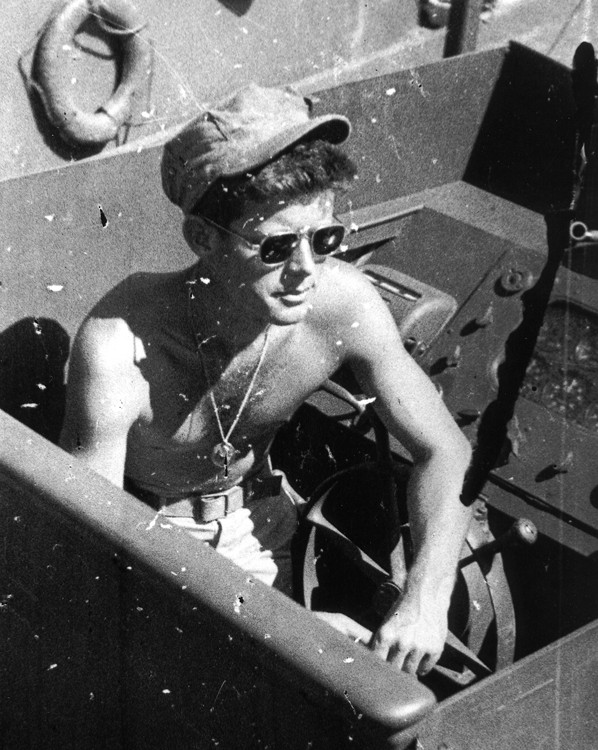
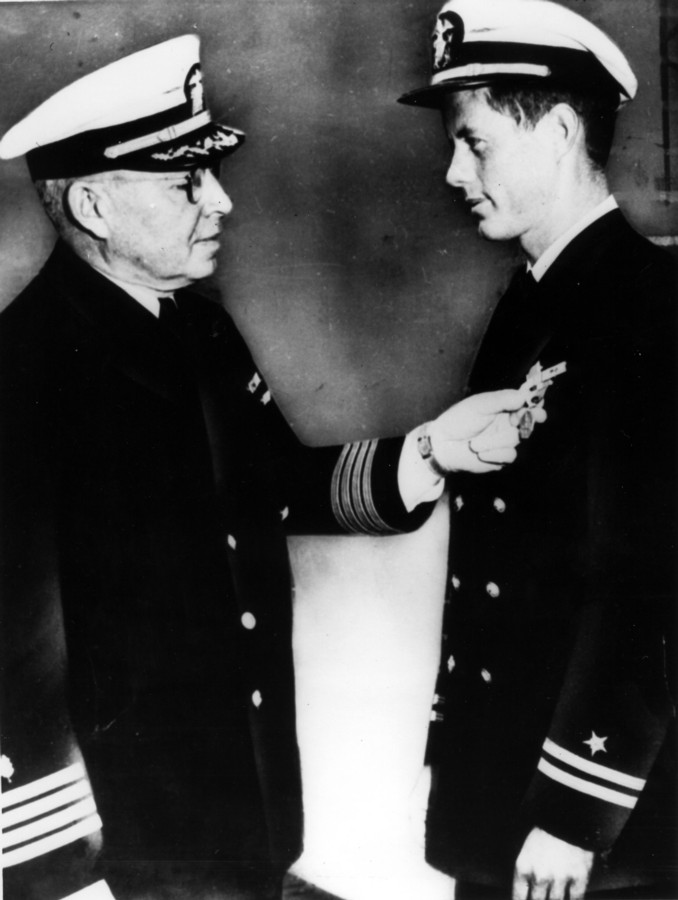 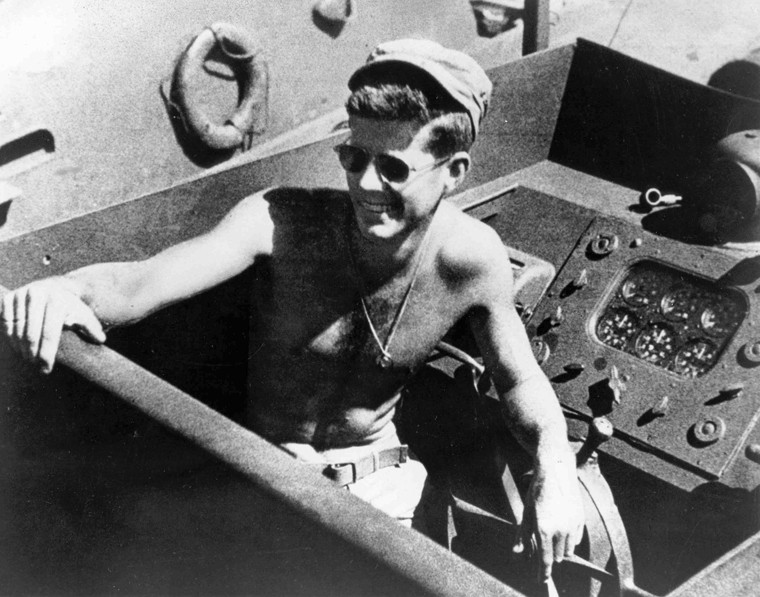 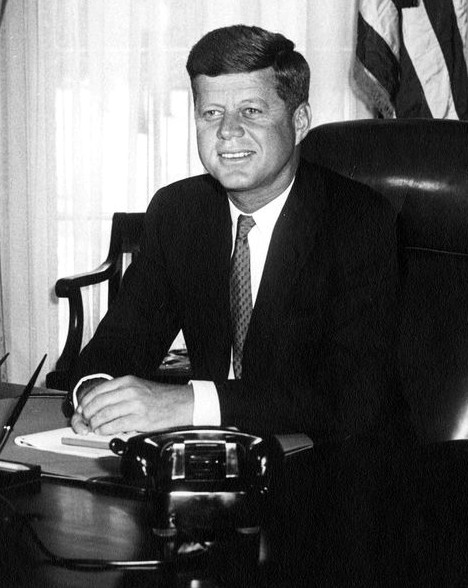
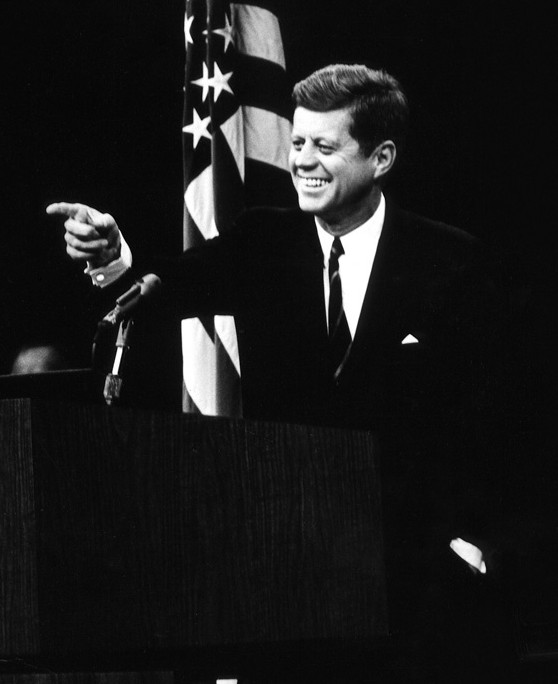 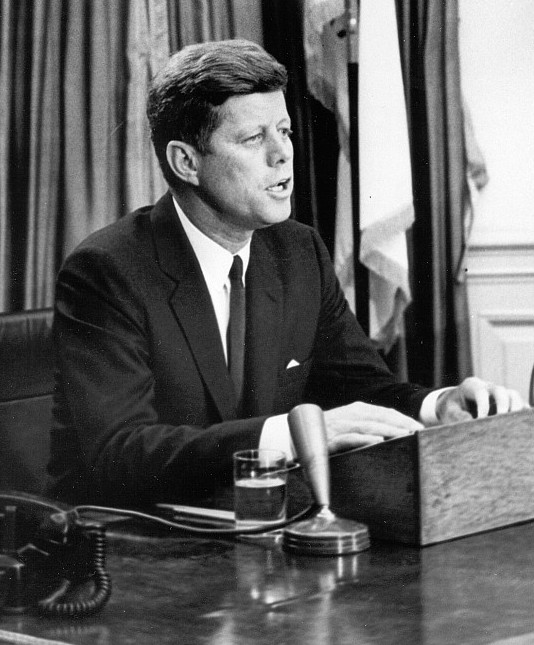
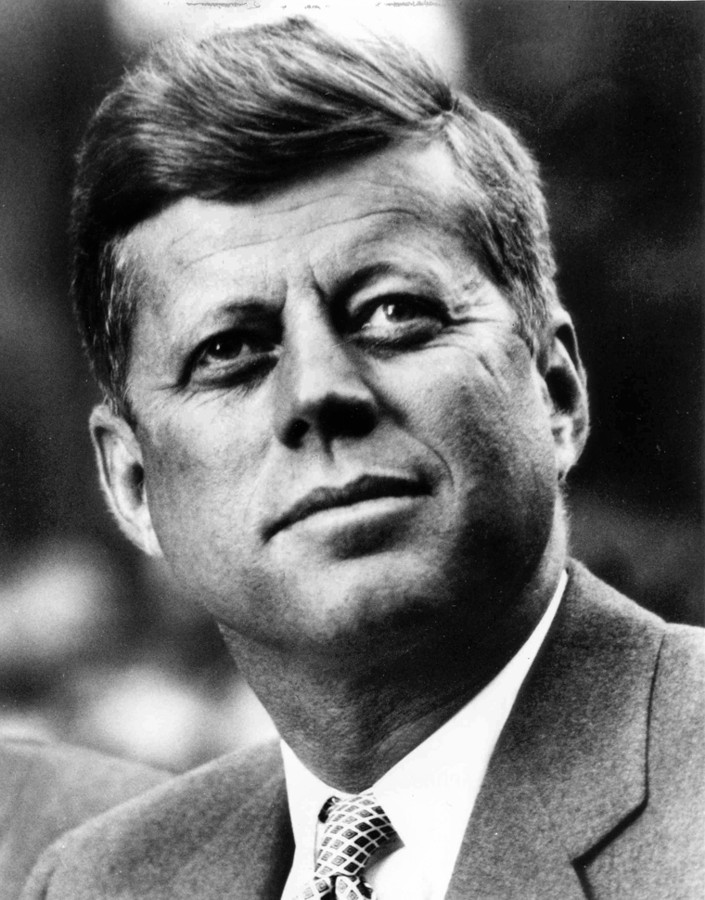 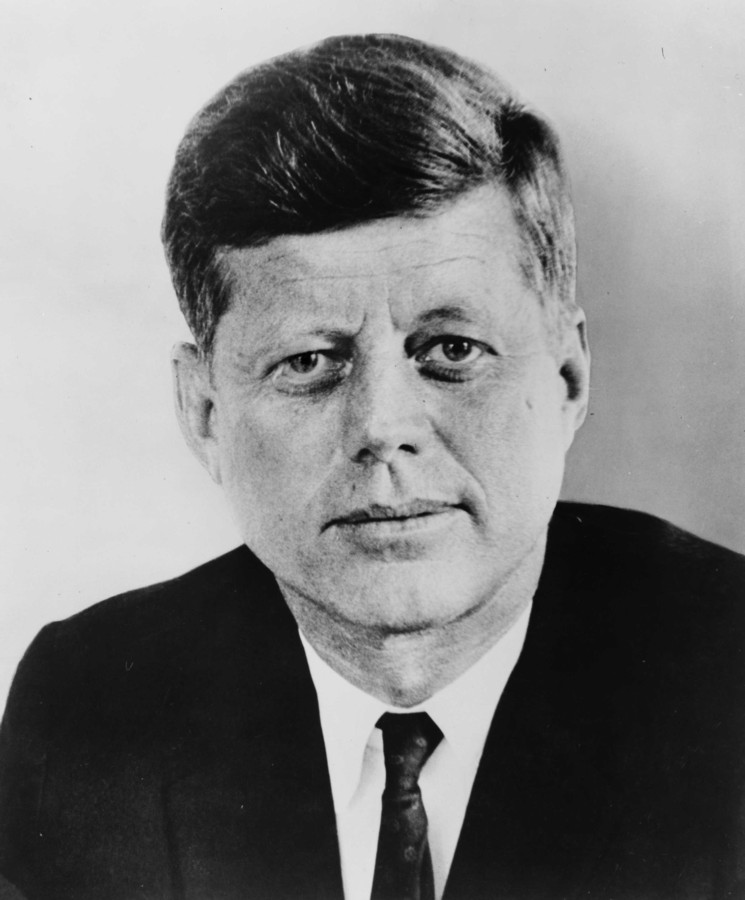
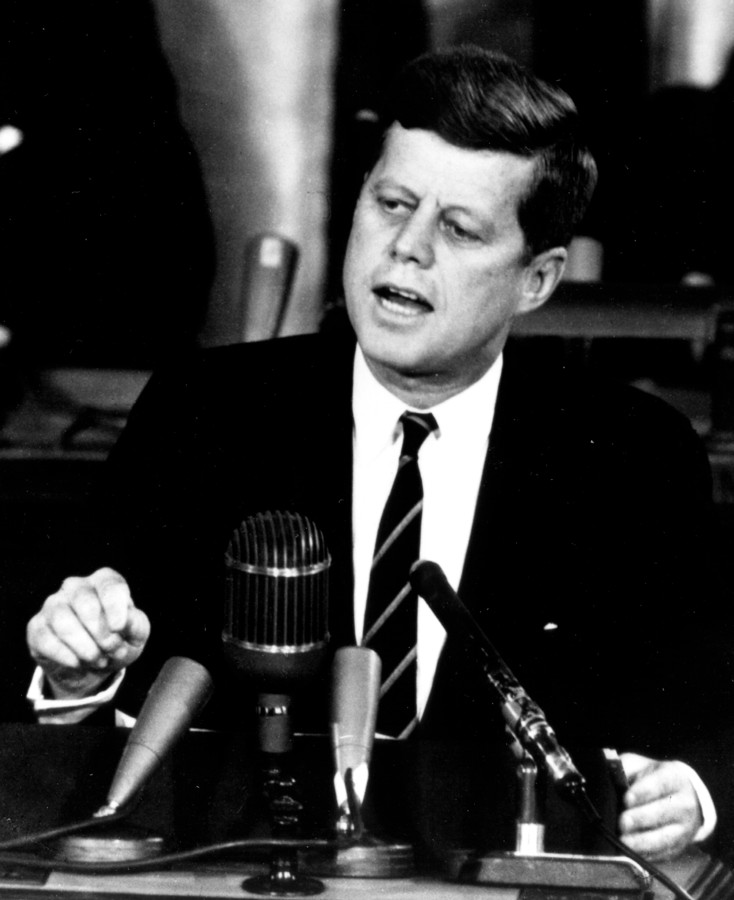 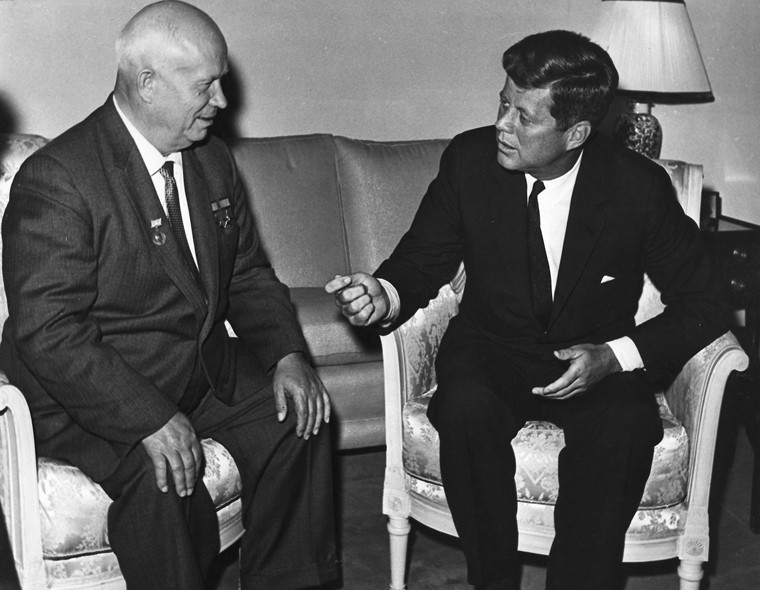 Soviet General Secretary Nikita Khrushchev with President John F. Kennedy 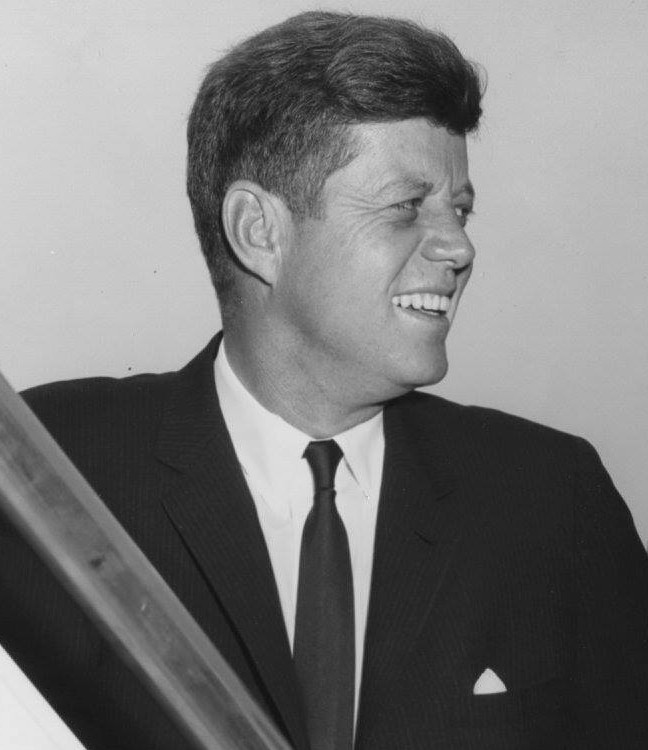 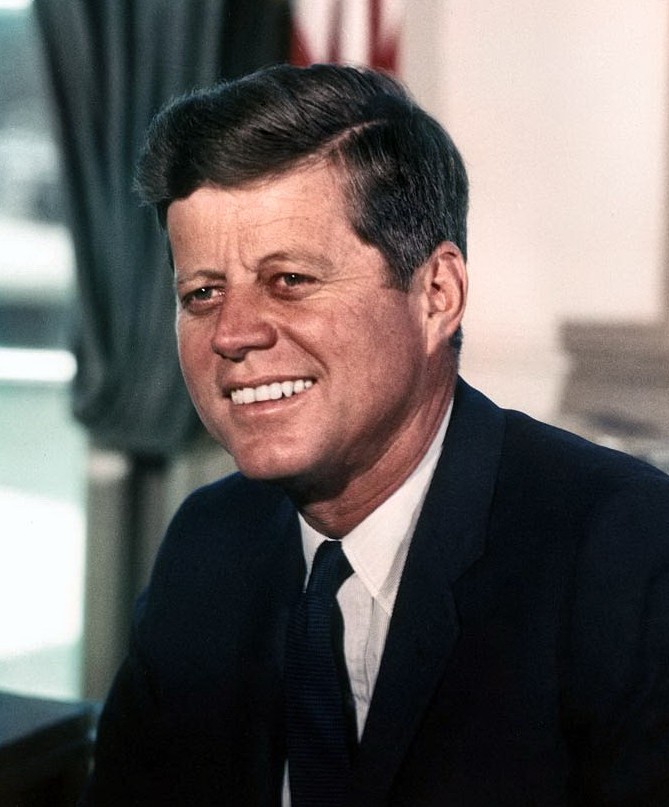
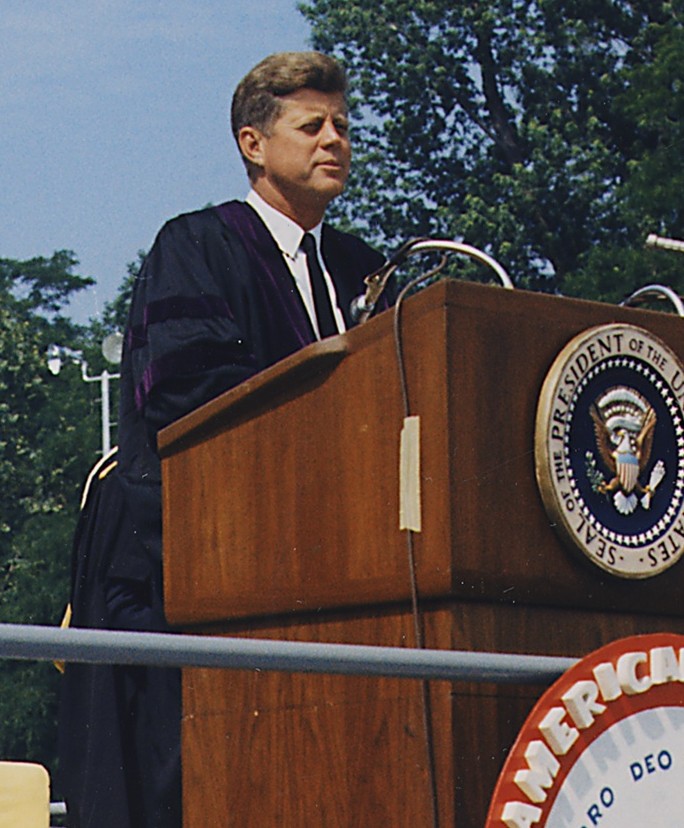 |
||
|
John Fitzgerald Kennedy (May 29, 1917 - November 22, 1963): John Fitzgerald Kennedy, the 35th President of the United States, was born on 29 May 1917 in Brookline, Massachusetts, and graduated cum laude from Harvard University in 1940. He received an ensign’s commission in the U.S. Naval Reserve in October 1941. He served in Washington in the Office of Naval Intelligence (October 1941-January 1942) and under Commandant, 6th Naval District, Charleston, South Carolina (January-July 1942), before he attended the U.S. Naval Reserve Midshipman’s School, Northwestern University, Chicago, Illinois (July-September 1942). Promoted to lieutenant (j.g.) on 1 October 1942, Kennedy underwent instruction at the Motor Torpedo Boat Squadrons (MTBRons) Training Center, Newport, Rhode Island (September-December 1942), Motor Torpedo Boat Squadron (MTBRon) 4 (December 1942-January 1943), where he was slated to command the motor torpedo boat PT-101, and then in the office of the Assistant Supervisor of Shipbuilding, Jacksonville, Florida (February 1943), in connection with fitting out MTBRon 14. Traveling to the Solomon Islands, Kennedy joined MTBRon 2, and ultimately assumed command of PT-109 on 24 April 1943, relieving Ensign Leonard J. Thom, USNR. The motor torpedo boat operated out of Tulagi, in the Solomons, and then Rendova. During a patrol in Blackett Strait on the night of 1-2 August 1943, PT-109 was sunk when the Japanese destroyer Amagiri (Lieutenant Commander Hanami Kouhei), rammed her and cut her in half. Kennedy directed the rescue efforts of the survivors of his crew, and rescued three, one of whom was the badly burned Motor Machinist’s Mate 2d Class Patrick H. McMahon, whom he personally towed back to the then-still floating wreckage of the forward part of the boat. Over the ensuing days, Kennedy managed to get his crew ashore. Ultimately, aided by friendly natives and a coastwatcher, PT-109’s surviving officers and men were rescued by PT-157 on 8 August 1943 and taken to Rendova. Following hospitalization in the aftermath of the loss of PT-109, during which time he received promotion to lieutenant (1 October 1943), Kennedy received further instruction at the MTBRons Training Center, Newport (December 1943-March 1944), and then the Subchaser Training Center, Miami, Florida (Mar-May 1944), where he received the Navy and Marine Corps Medal for the heroism he had displayed in the rescue of survivors from his sunken PT-boat. After suffering injuries in a fall, he underwent hospitalization at the U.S. Naval Hospital, Chelsea, Massachusetts (May 1944-March 1945), and, ultimately, retired from active duty on 1 March 1945. Having assumed the family’s political mantle after the end of World War II, his older brother Joseph P. Kennedy, Jr., having been killed during the war, Kennedy was elected to the 80th U.S. Congress on 5 November 1946, and was elected twice more, to the 81st and 82d Congresses. Elected Senator on 4 November 1952, and re-elected 4 November 1958, he focused on national defense and civil rights issues. Kennedy ran for President against Republican Richard M. Nixon and won the contest, being elected to the presidency on 8 November 1960. In his inaugural address of 20 January 1961, Kennedy advocated that “the word go forth from this time and place to friend and foe alike, that the torch has passed to a new generation of Americans - born in this century, tempered by war, disciplined by a hard and bitter peace, proud of our ancient heritage.” As President, he prepared legislation and mobilized the strength of the Federal Government to insure minorities the benefits of American society. He also sought sweeping reforms in fields of economic welfare, health, and education: “... every American has the right to a decent life for himself and a better life for his children.” In the context of the Cold War, Kennedy wisely used sea power to meet global crises during the ideological struggle with the Soviet Union, including a “quarantine” of Cuba in the autumn of 1962 that choked off the flow of military supplies to that island and persuaded the Soviet Union to remove its offensive missiles. Speaking from the flight deck of the attack carrier Kitty Hawk (CVA-63) on 6 June 1963, he recalled the role of American sea power during that confrontation: “Events of October 1962 indicated, as they had all through history, that control of the sea means security. Control of the seas can mean peace. The United States must control the seas if it is to protect your security and those countries which stretch thousands of miles away that look to you on this ship and the sister ships of the United States Navy.” He was dedicated to his belief “that all the world - in Eastern Europe as well as Western, in Southern Africa as well as Northern, in old nations as well as new - that people must be free to choose their own future, without discrimination or dictation, without coercion or subversion.” In hopes of spreading American ideals to the developing world, Kennedy created the Peace Corps and supported reform and democratization in Latin America and Africa. As Soviet threats to Berlin flared anew in the summer of 1963, he visited West Berlin. “Freedom is indivisible,” he declared there, “and when one man is enslaved, all are not free.” Worries over the Soviet threat to Western Europe also encouraged Kennedy to act forcefully in Southeast Asia, and he sent thousands of advisors to advise the South Vietnamese military. Despite a major escalation of the ballistic missile arms race with the Soviet Union that began under his administration, Kennedy did manage to use the Cuban missile crisis to tone down the rhetoric of the Cold War. The sobering experience also encouraged the nuclear powers to sign the 1963 treaty outlawing atmospheric or underwater nuclear tests, an achievement called “the first concrete limitation on the nuclear arms race since the bomb was invented.” Tragically, on 22 November 1963, as his motorcade traveled through downtown Dallas, Texas, Kennedy, as well as Texas Governor John Connally, riding in the same automobile, were felled by assassin’s bullets. Police arrested Lee Harvey Oswald, who had been seen in the nearby Texas Schoolbook Depository building, later that day. While Connally survived the attack, the President was pronounced dead at Parkland Hospital in Dallas a short time later. He was interred on 25 November 1963 in Arlington National Cemetery, the sight of his son John, Jr., saluting his slain father an indelible image as the nation mourned. source: US Naval History & Heritage Command |
||
|
USS John F. Kennedy (CVN 79): Naming On 7 December 2007, the 66th anniversary of the Attack on Pearl Harbor, Congressman Harry Mitchell (D-AZ) proposed naming this ship USS Arizona. In 2009, Congressman John Shadegg (R-AZ) proposed naming either CVN-79 or the subsequent CVN-80 Barry M. Goldwater, after Barry Goldwater, the late senator from Arizona. On 29 May 2011, the Department of Defense announced that the ship would be named for John F. Kennedy (1917-1963), the 35th President of the United States, who served in the navy during World War II. She will be the third navy ship named after members of the Kennedy family, and the second aircraft carrier named John F. Kennedy, succeeding USS John F. Kennedy (CV-67), which served from 1967 to 2007. Construction On 15 January 2009, Northrop Grumman Shipbuilding was awarded a $374 million contract for design work and construction preparation for John F. Kennedy. On 30 September 2010, Northrop Grumman announced a new vice president for the construction of John F. Kennedy, Mike Shawcross, and that preparations were under way to begin construction. On 25 February 2011, the navy conducted the First Cut of Steel ceremony at Northrop Grumman Shipbuilding in Newport News, signalling the formal start of construction for John F. Kennedy. John F. Kennedy was originally planned to be completed in 2018. This was extended to 2020 after Secretary of Defense Robert Gates announced in 2009 that the program would shift to a five-year building program so as to place it on a "more fiscally sustainable path". By late 2012, delays had occurred in construction, and the Navy Department was investigating extending the construction time of both the USS Enterprise (CVN-80) and John F. Kennedy by an additional two years which could delay the carrier's entry into service until 2022. In September 2013, the Government Accountability Office recommended delaying the detail design and construction contract for John F. Kennedy until programmatic shortfalls are sorted out. The Navy and Defense Department have rejected the recommendation. The Navy faces technical, design, and construction challenges to completing USS Gerald R. Ford (CVN-78), including producing systems prior to demonstrating their maturity to meet required installation dates. Gerald R. Ford had costs increase by 22 percent to $12.8 billion, and additional increases could follow due to uncertainties facing critical technology systems and shipbuilder underperformance. Risk is introduced in the navy's plan to conduct integration testing of key systems at the same time as initial operational test and evaluation. One action the GAO says could be taken to ensure Ford-class carrier acquisitions are supported is conducting a cost-benefit analysis of required capabilities and associated costs. The ship's keel was laid in Newport News, Virginia on 22 August 2015. As part of the traditional keel laying ceremony, the initials of ship sponsor Caroline Kennedy, daughter of President Kennedy and the sponsor of the previous John F. Kennedy, were welded into the ship's hull. As of late June 2017 the ship was 50% structurally complete. On 28 February 2018, Huntington Ingalls Industries announced that its Newport News Shipbuilding division had built 70% of the structures necessary to complete John F. Kennedy. On 30 April 2018, Huntington Ingalls Industries announced that she was "75 percent structurally erected and more than 40 percent complete." On 3 May 2018 Huntington Ingalls President & CEO Mike Petters reported that John F. Kennedy was to be launched three months ahead of schedule on 29 October 2019. On 30 May 2019 the 588-ton bridge and island was installed. Under the island Captain Todd Marzano placed his wings and the first Kennedy half dollar which was donated by Caroline Kennedy was put in place. Next to these Rear Admiral Brian Antonio (program executive officer, Aircraft Carriers, ret.), Rear Admiral Roy Kelley (commander, Naval Air Force Atlantic), and Jennifer Boykin (president, Newport News Shipbuilding) placed coins each embossed with quotes from President Kennedy and parts of the ship's motto. Caroline could not be present, so the order was given via radio for the crane operator to lift the island and set it down on the deck over the ceremonial items and entombing them in the ship's superstructure. The ship reached 100% complete on 11 July 2019 with the installation of the upper bow and launch deck consisting of the ships two forward catapults. On 1 October 2019, the ship's crew was activated for the first time as Pre-Commissioning Unit (PCU) John F. Kennedy at a ceremony aboard the vessel at Newport News Shipbuilding. On 29 October 2019, Newport News Shipbuilding began flooding the dry dock where John F. Kennedy has been under construction. The process of filling the dry dock with more than 100,000,000 US gallons (380,000,000 l; 83,000,000 imp gal) of water took place over several days, and it marked the first time the ship has been in water. Once the ship was afloat, it was moved to west end of the dry dock. The ship was christened on 7 December 2019 by Caroline Kennedy, who reenacted the bottle bash she did when the first John F. Kennedy (CV-67) was christened 52 years earlier. In November 2020, Huntington Ingalls Industries received a nine-figure modification on an earlier contract to accomplish CVN 79 "single phase delivery and Joint Strike Fighter (F-35C) capabilities" in Newport News, Virginia. According to the contract announcement, the "single-phase delivery approach" is adopted "to meet both Fleet requirements and a congressional mandate of ensuring that CVN 79 is capable of operating and deploying Joint Strike Fighter (F-35C) aircraft before completing the post-shakedown availability as codified in Section 124 of the fiscal 2020 National Defense Authorization Act (Public Law 116-92)." The ship is projected to begin testing her Electromagnetic Aircraft Launch System (EMALS) in 2022. Delivery of the carrier is expected to be in 2025. source: wikipedia |
||
| patches + more | ||
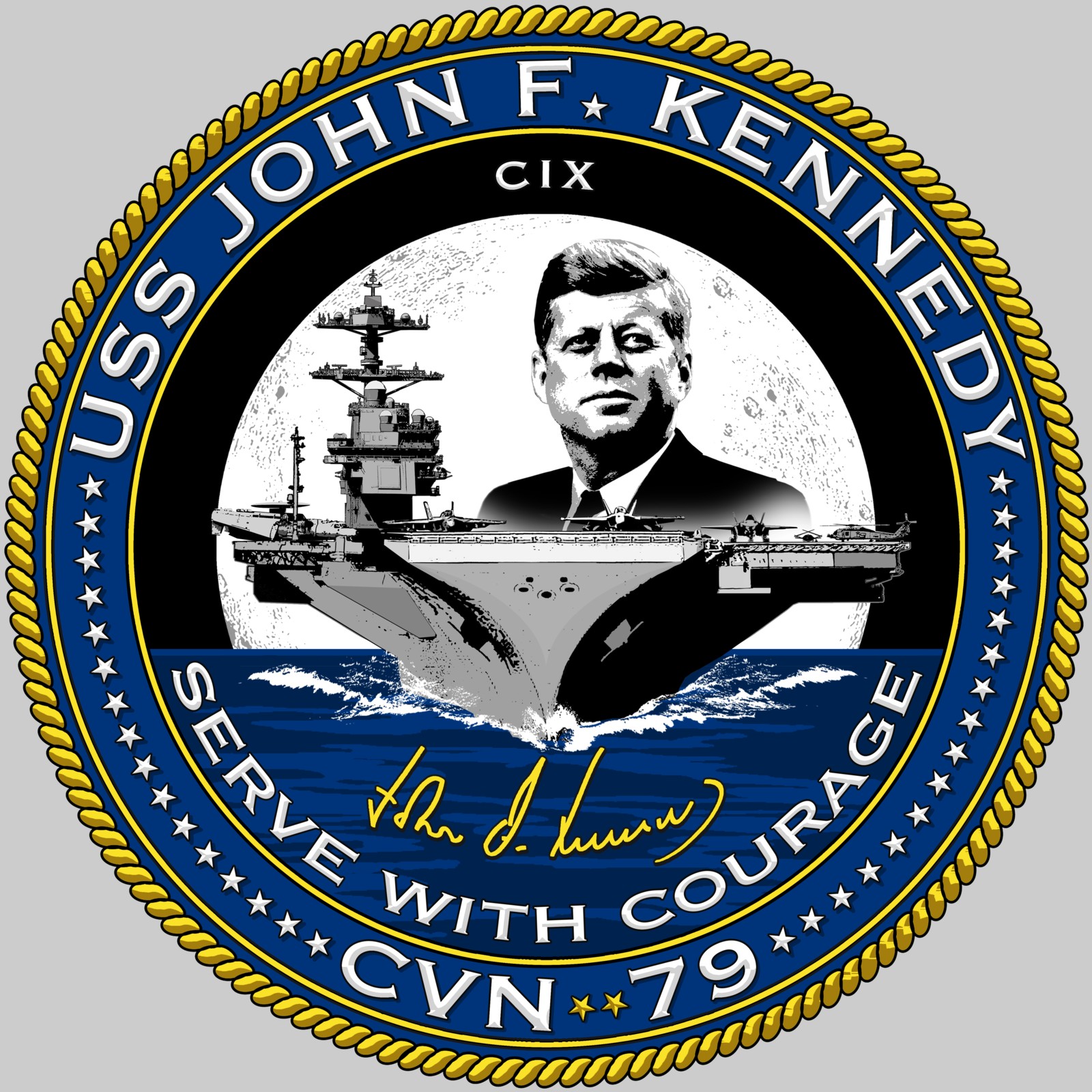 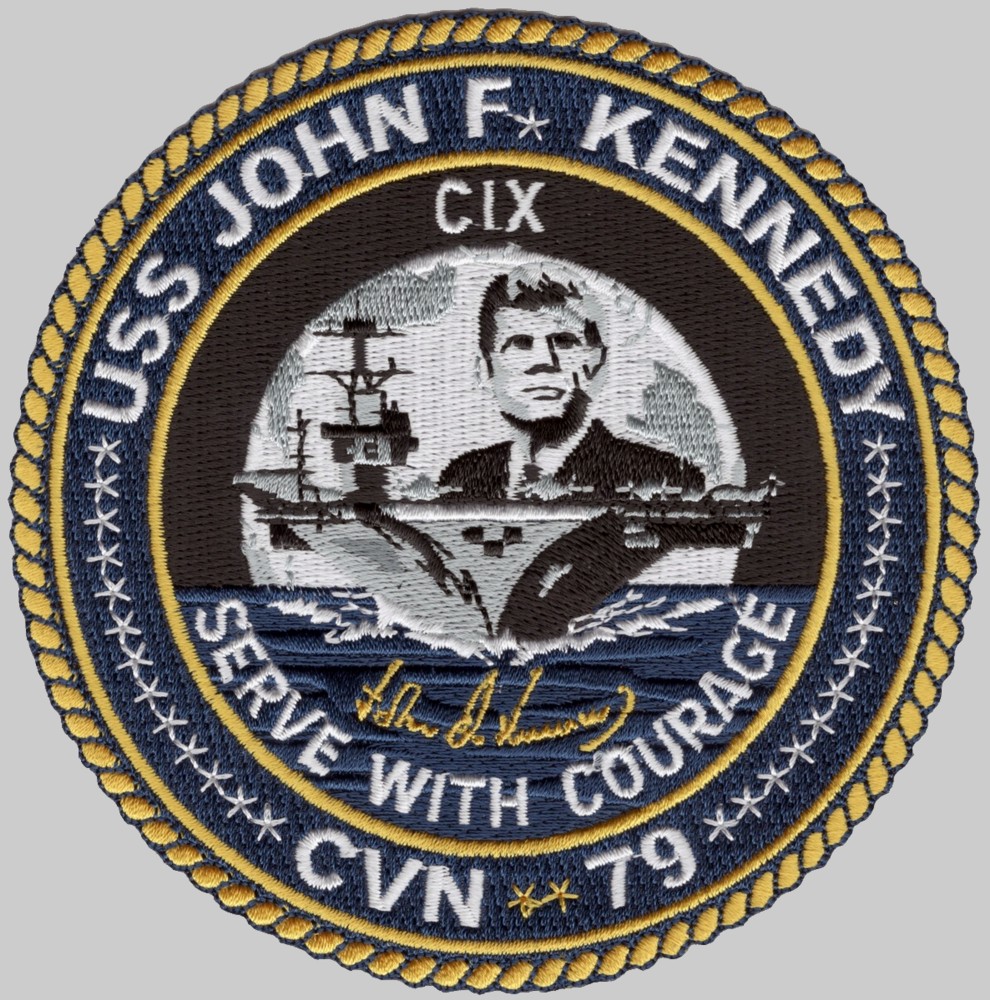 |
||
|
|
seaforces.org |
USN ships
start page | |
